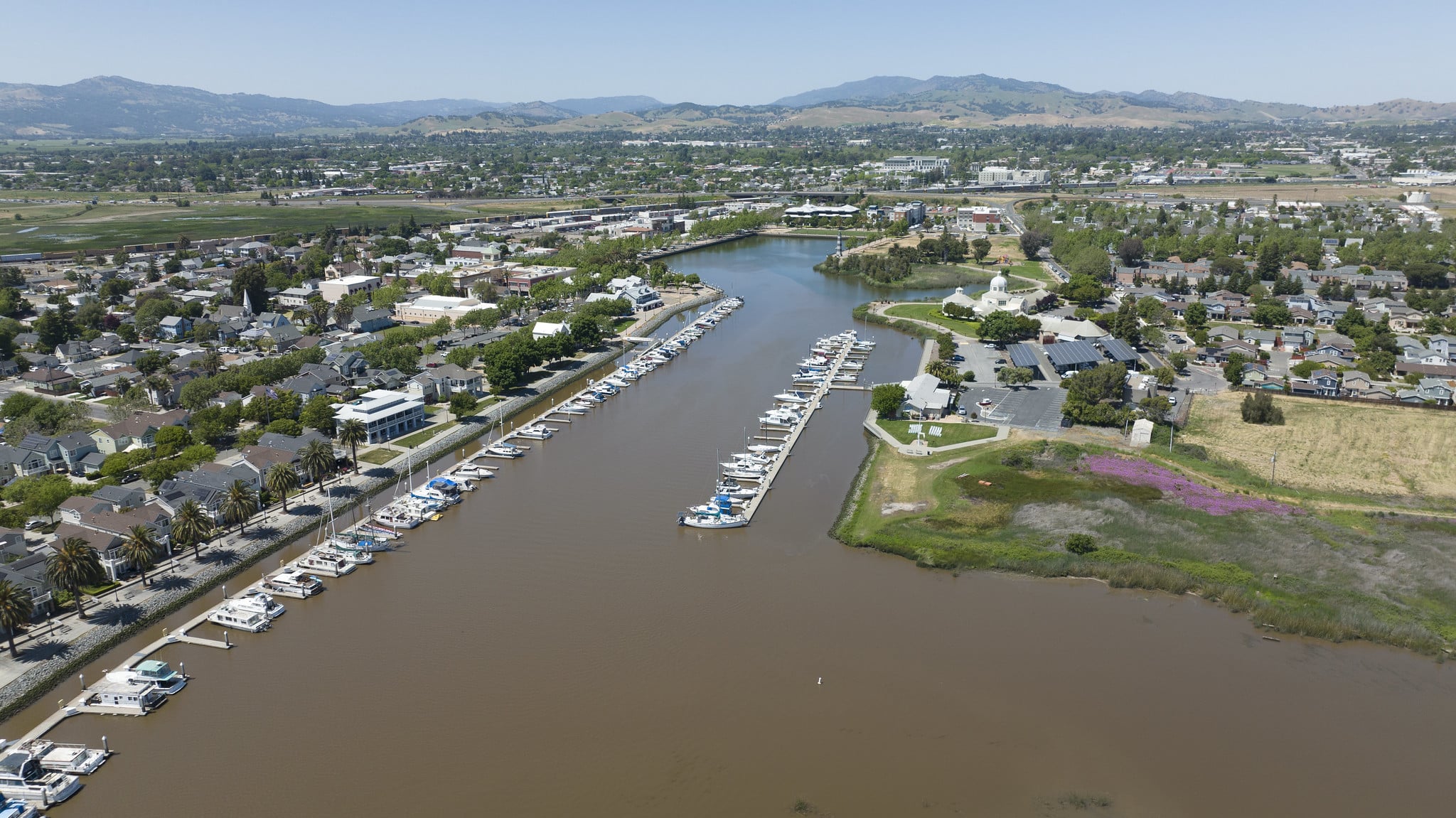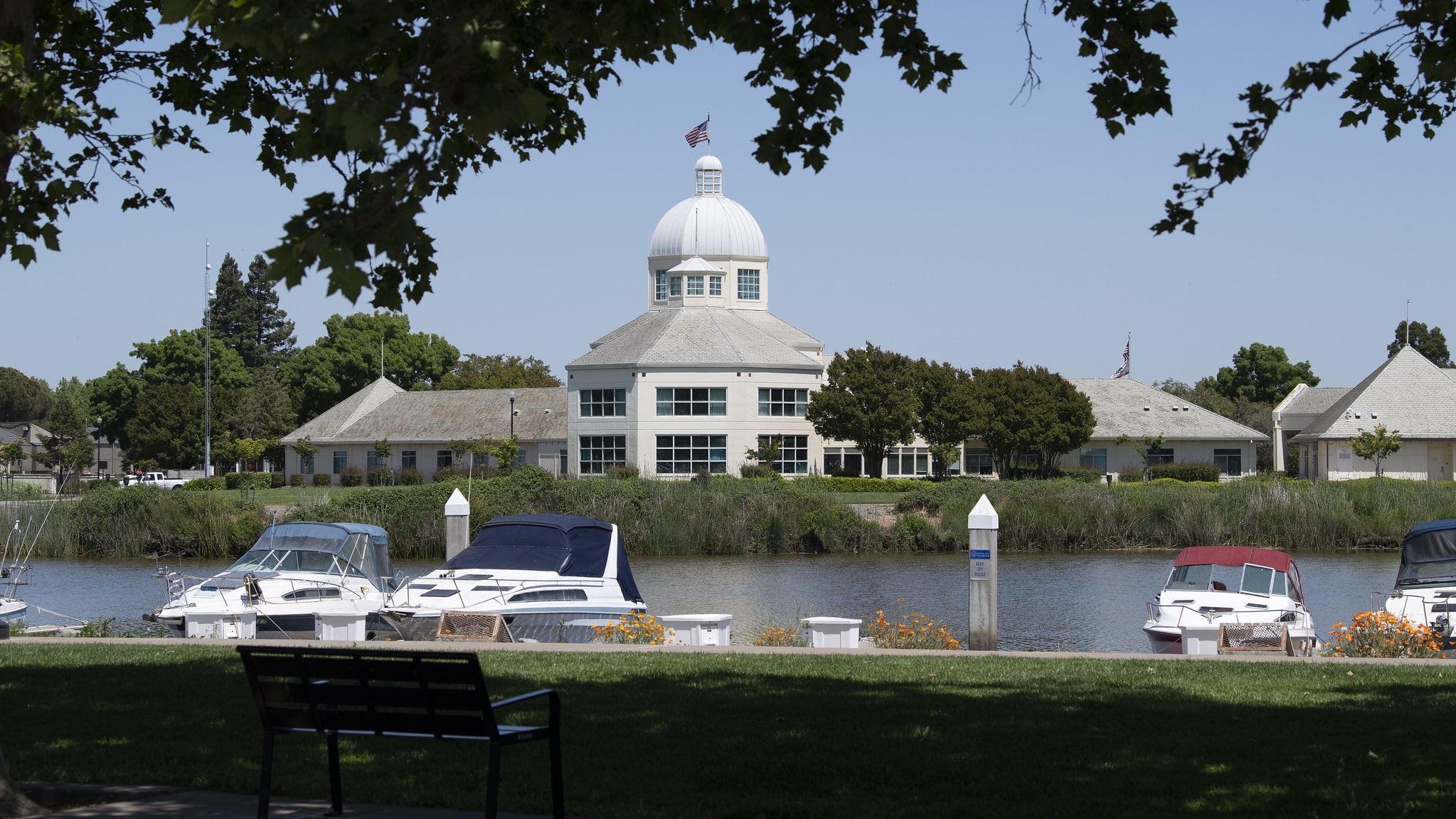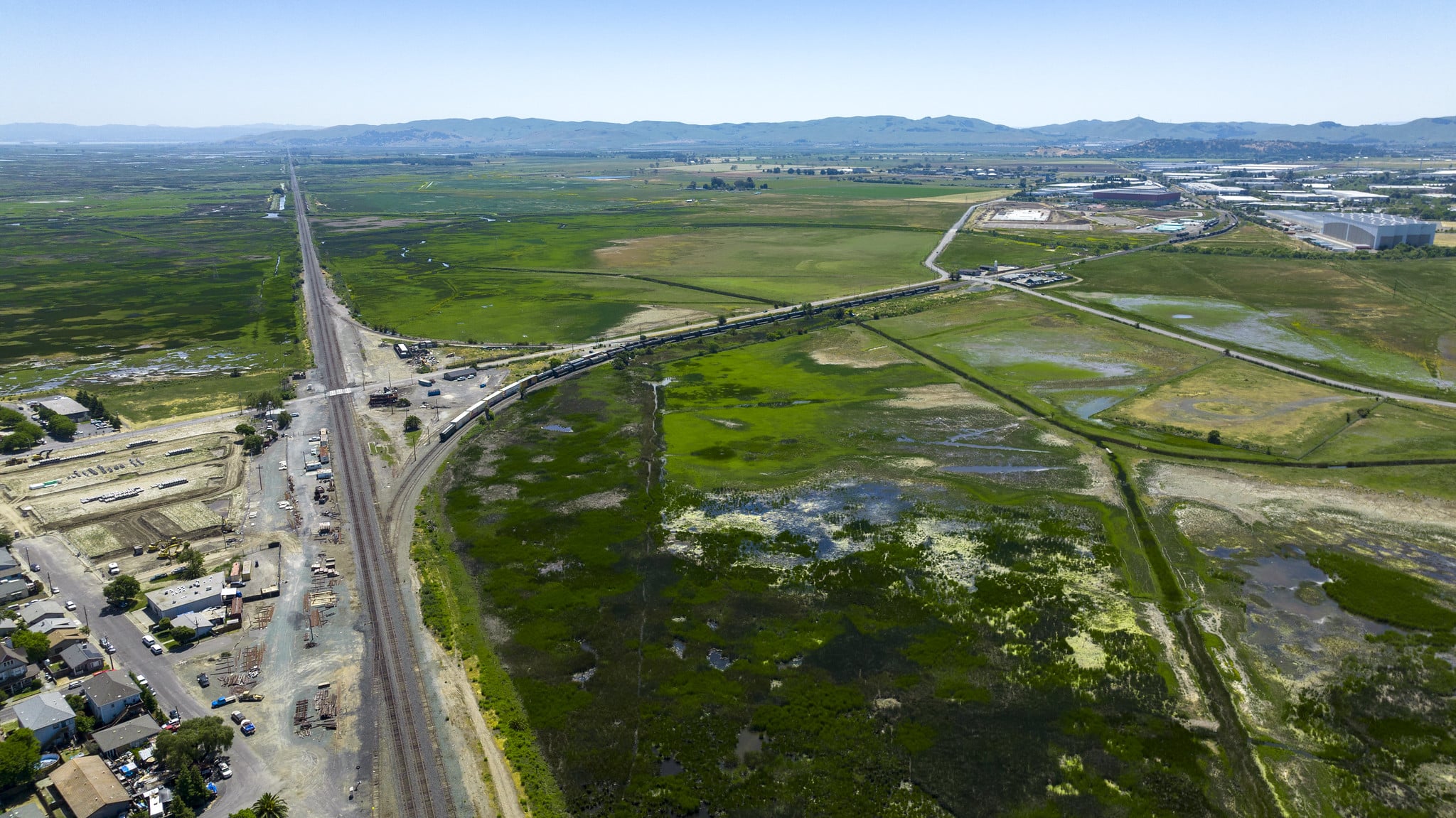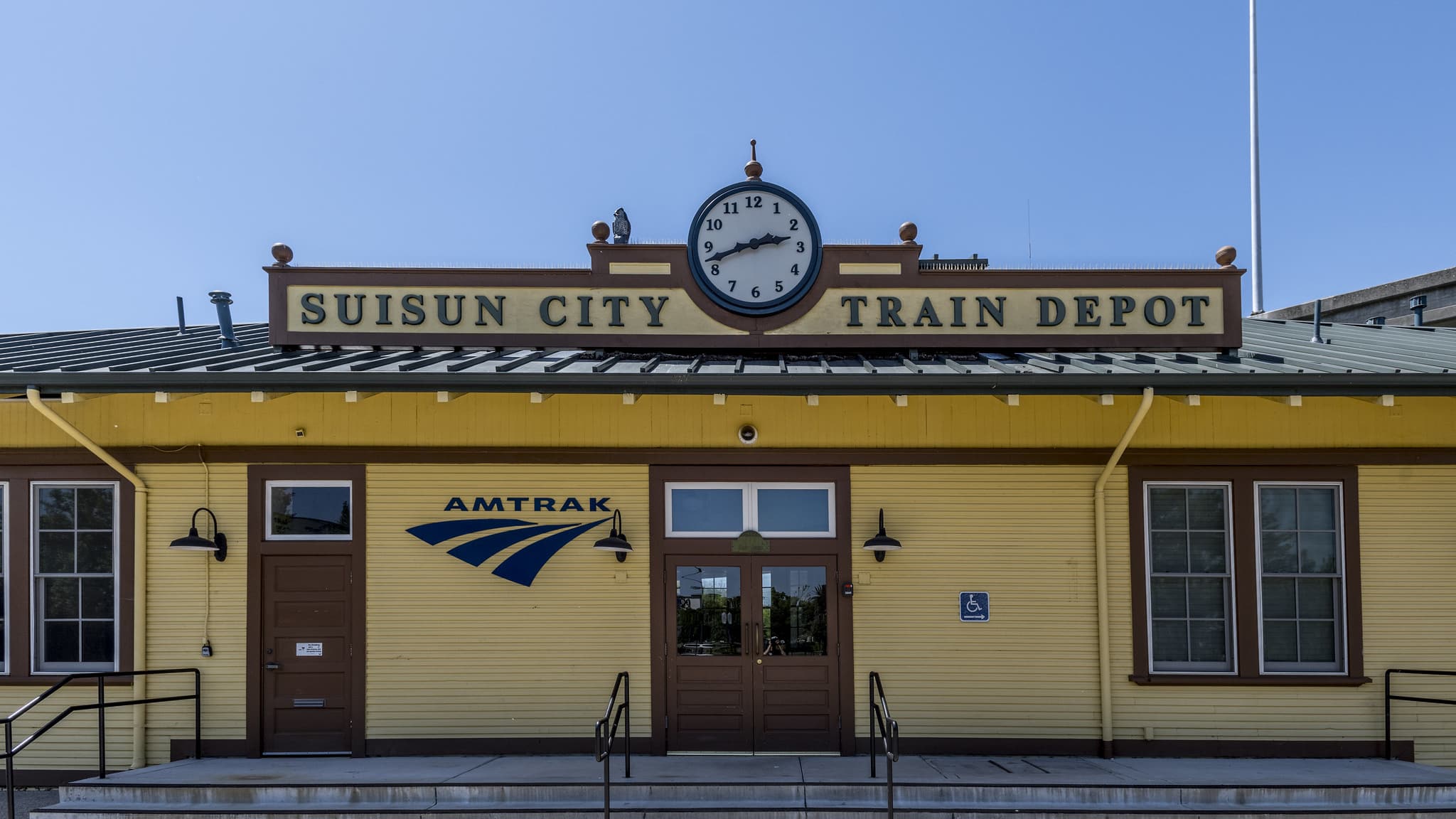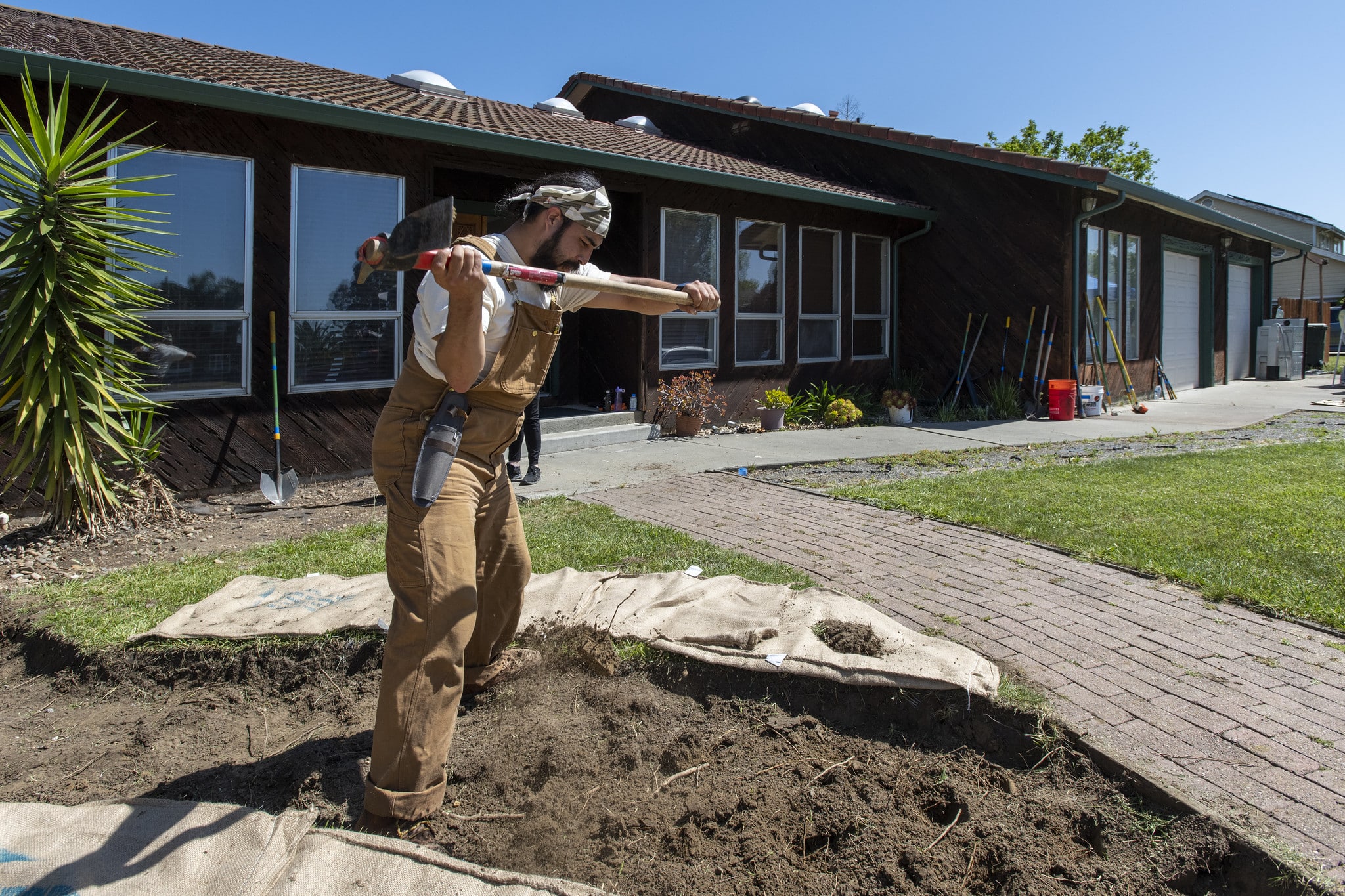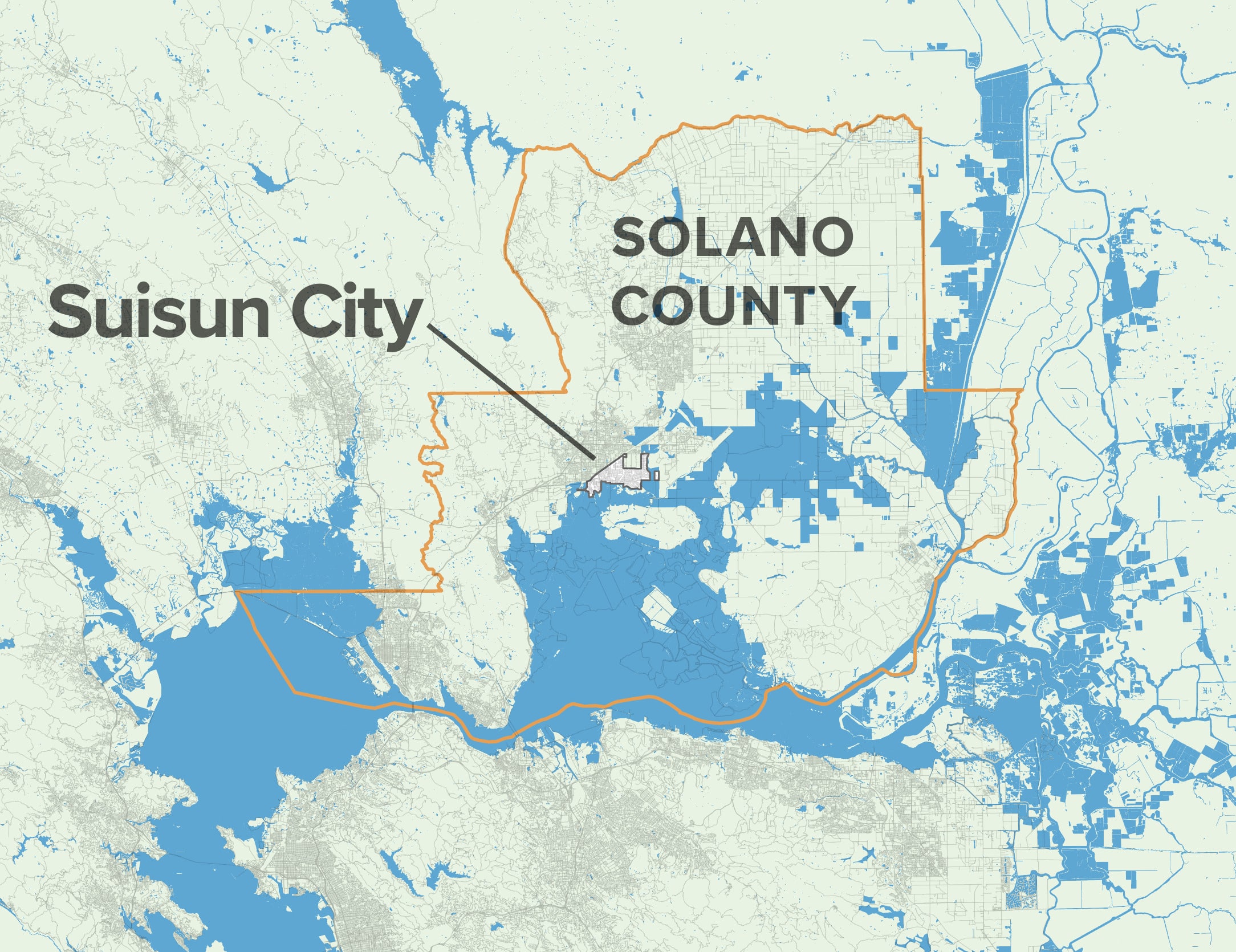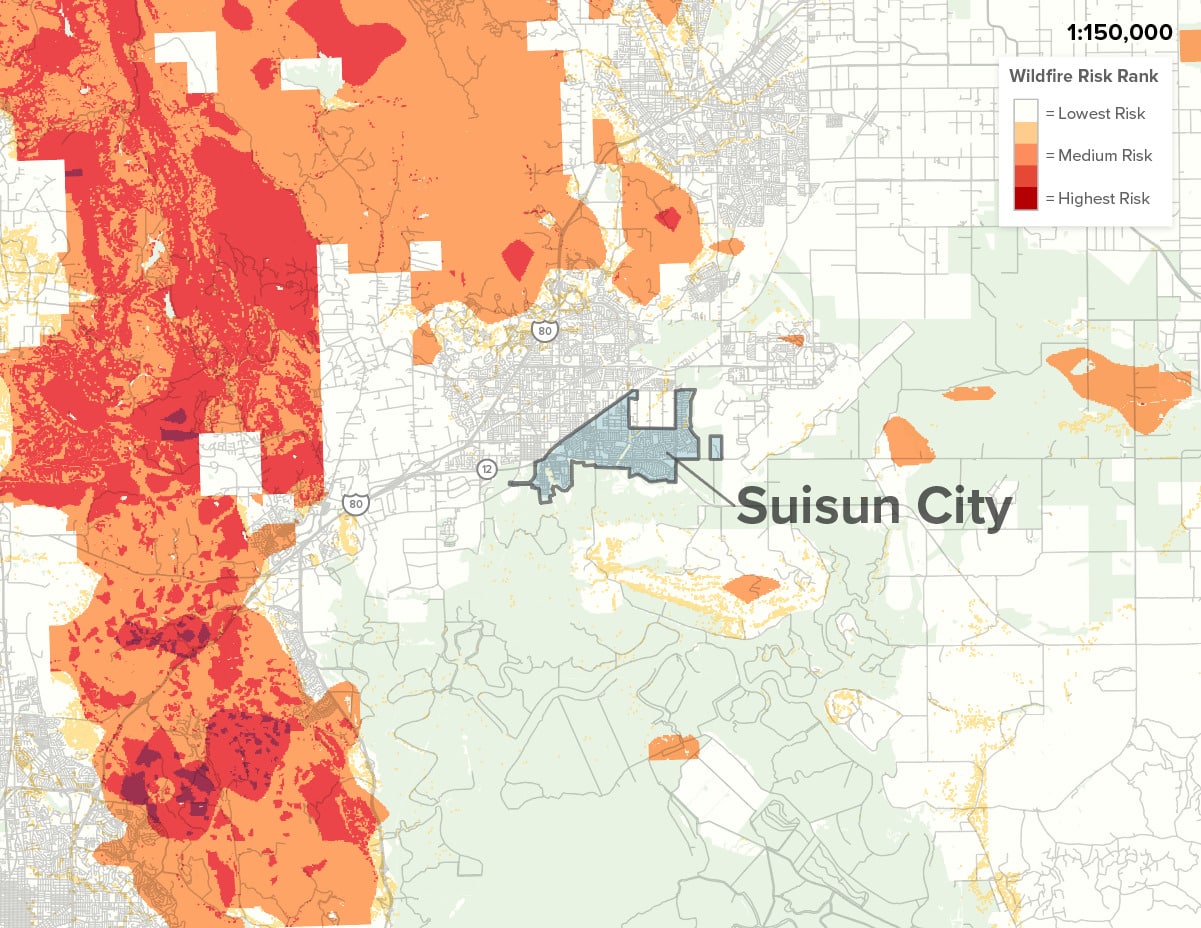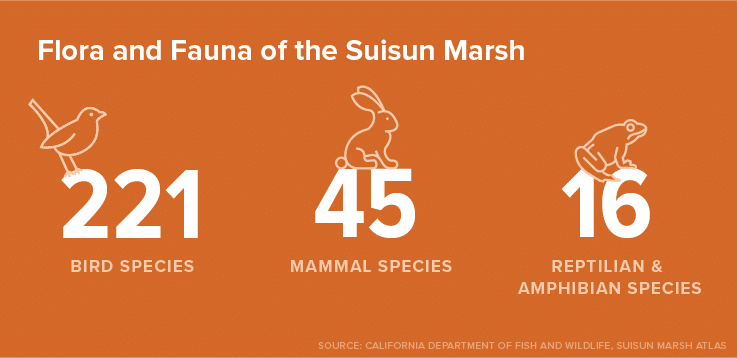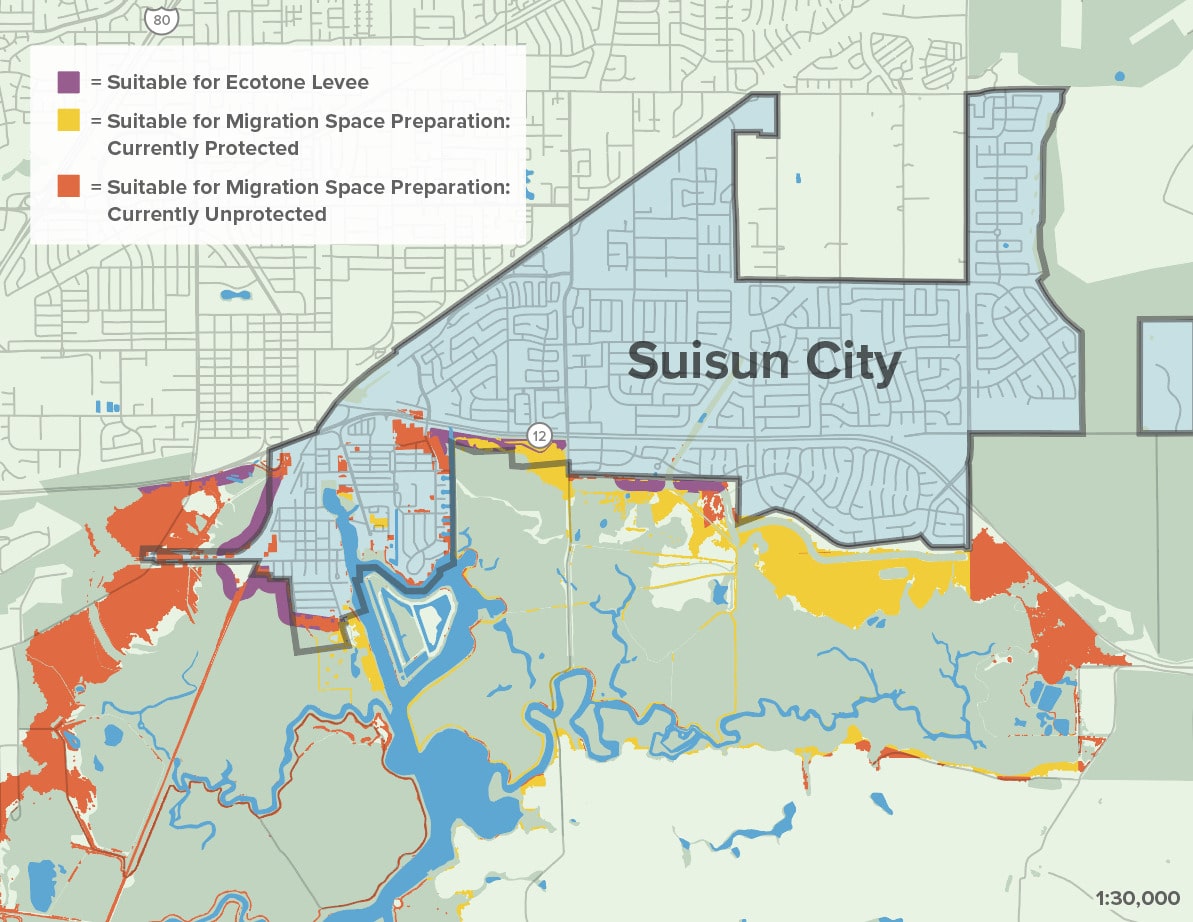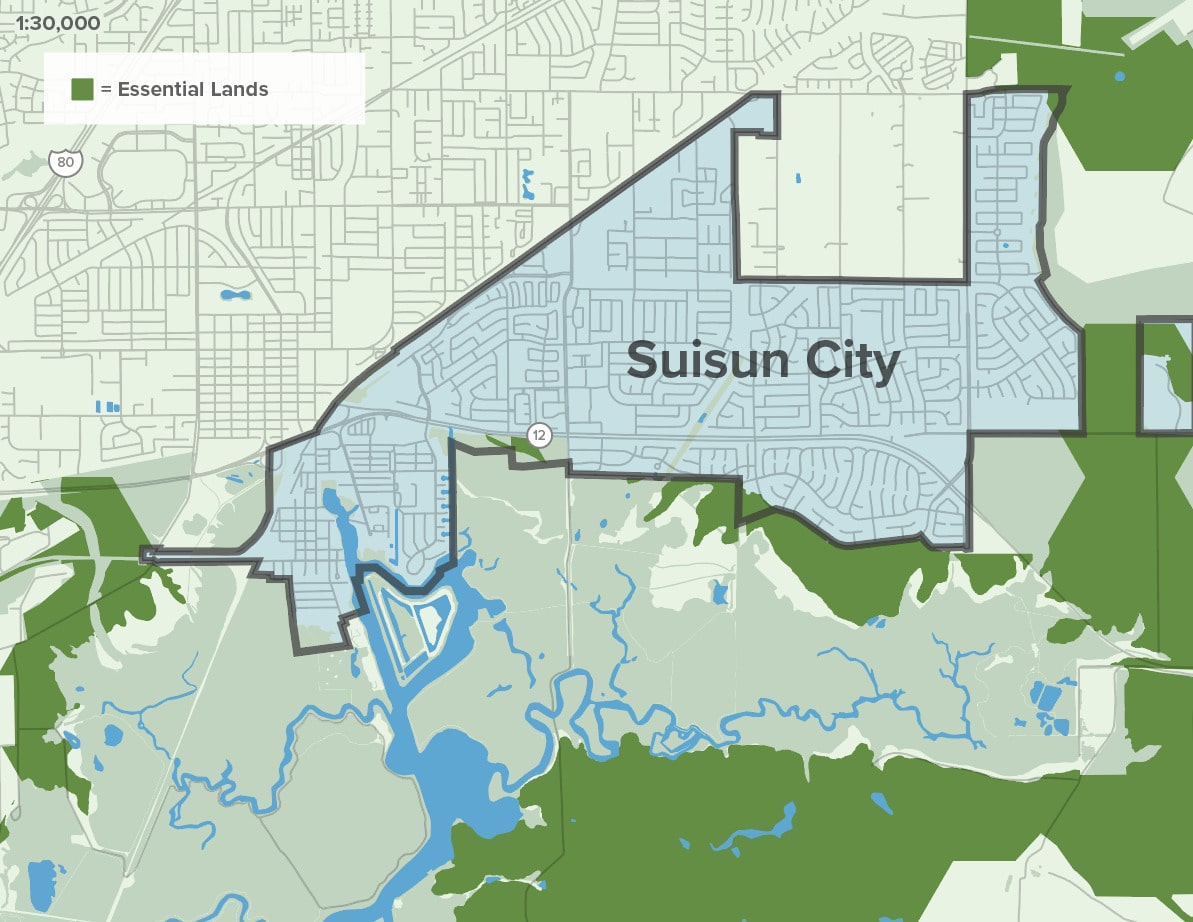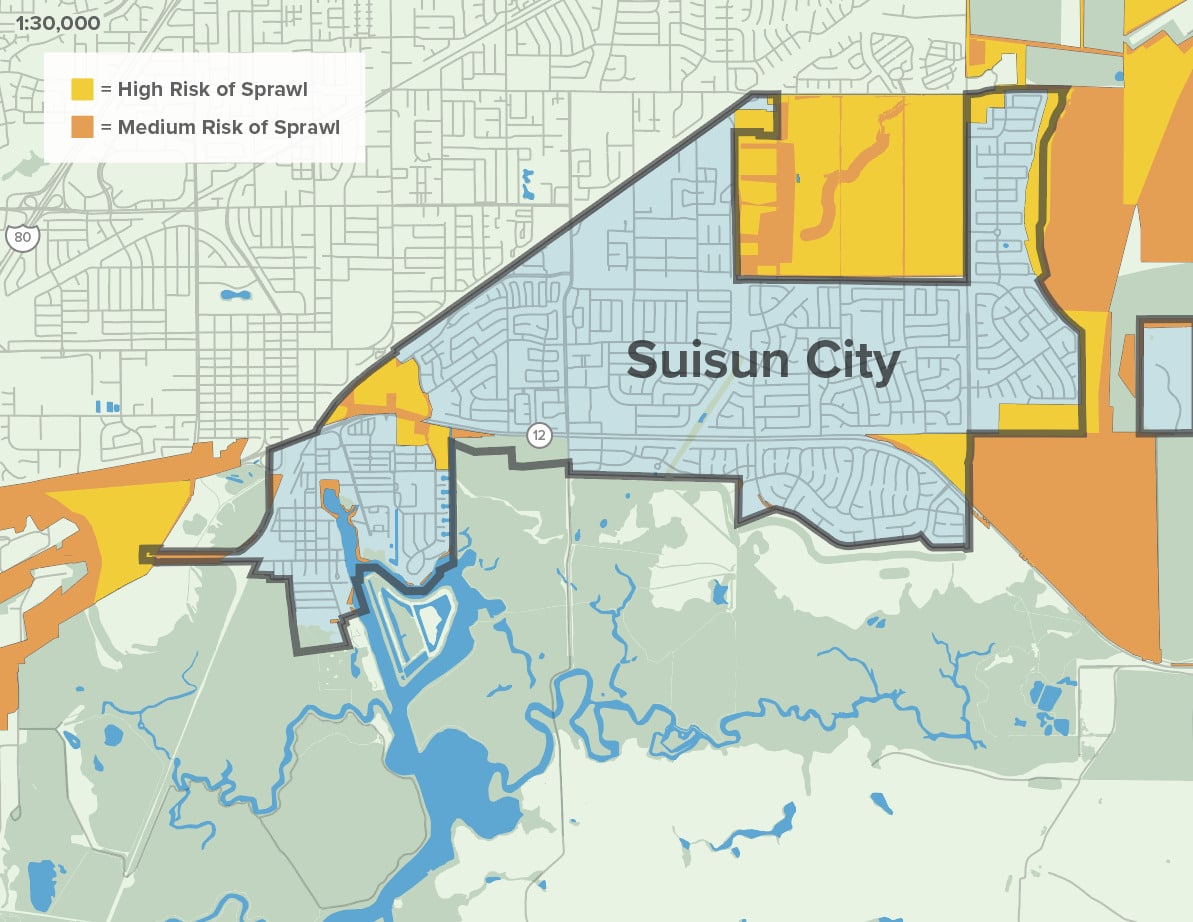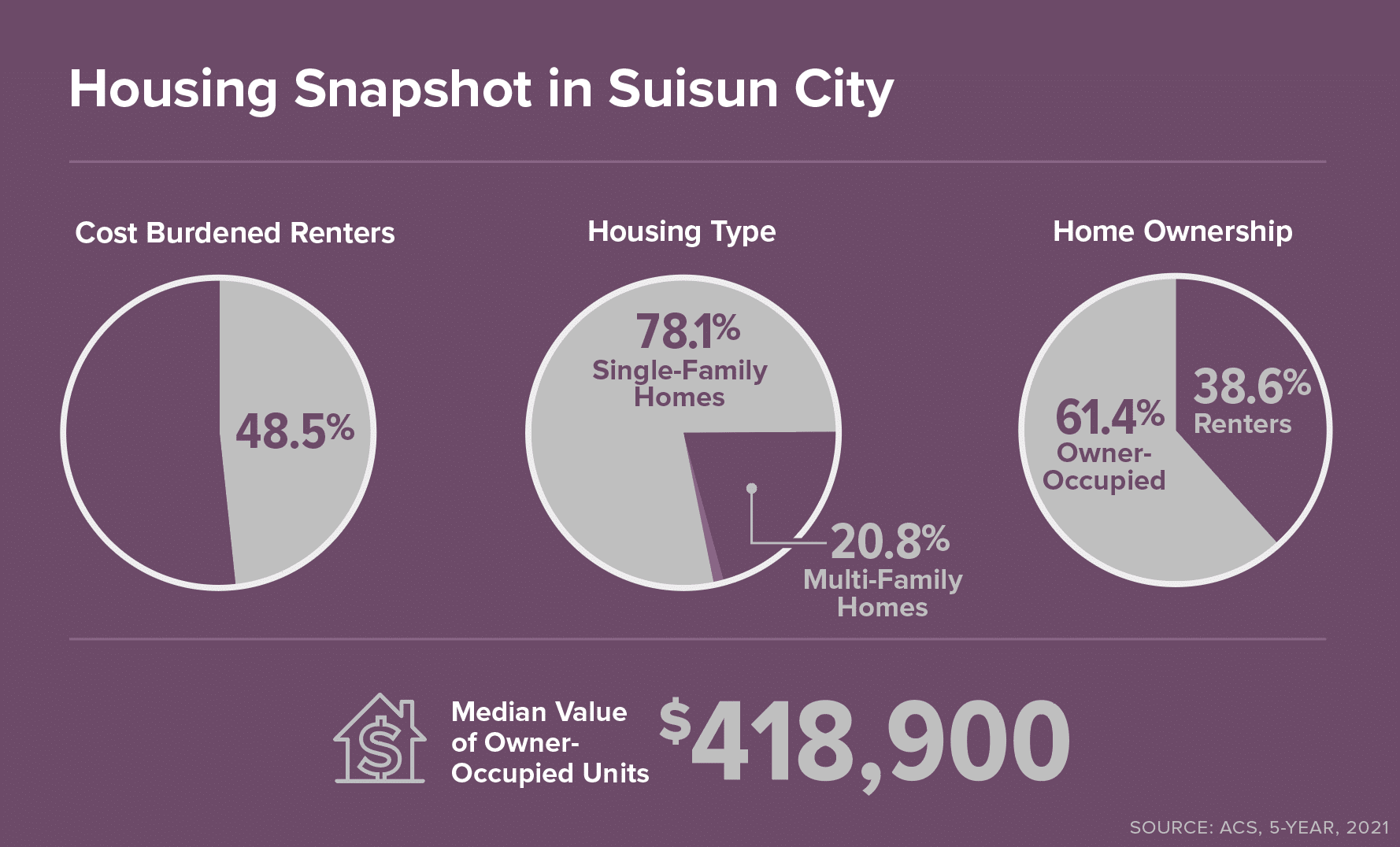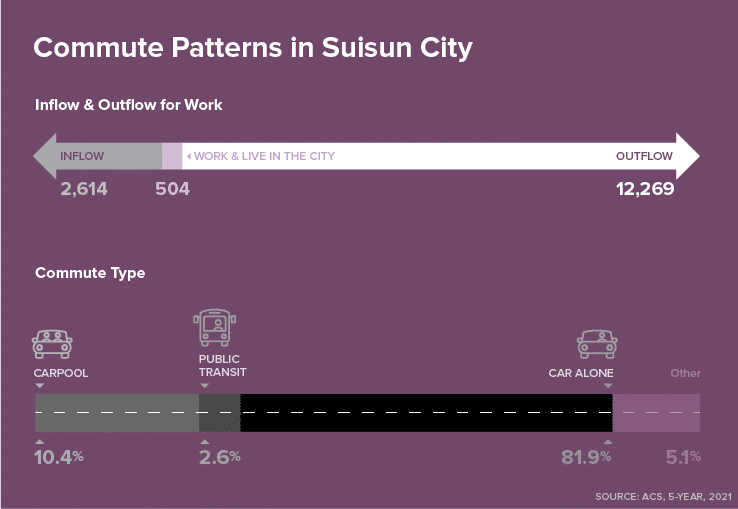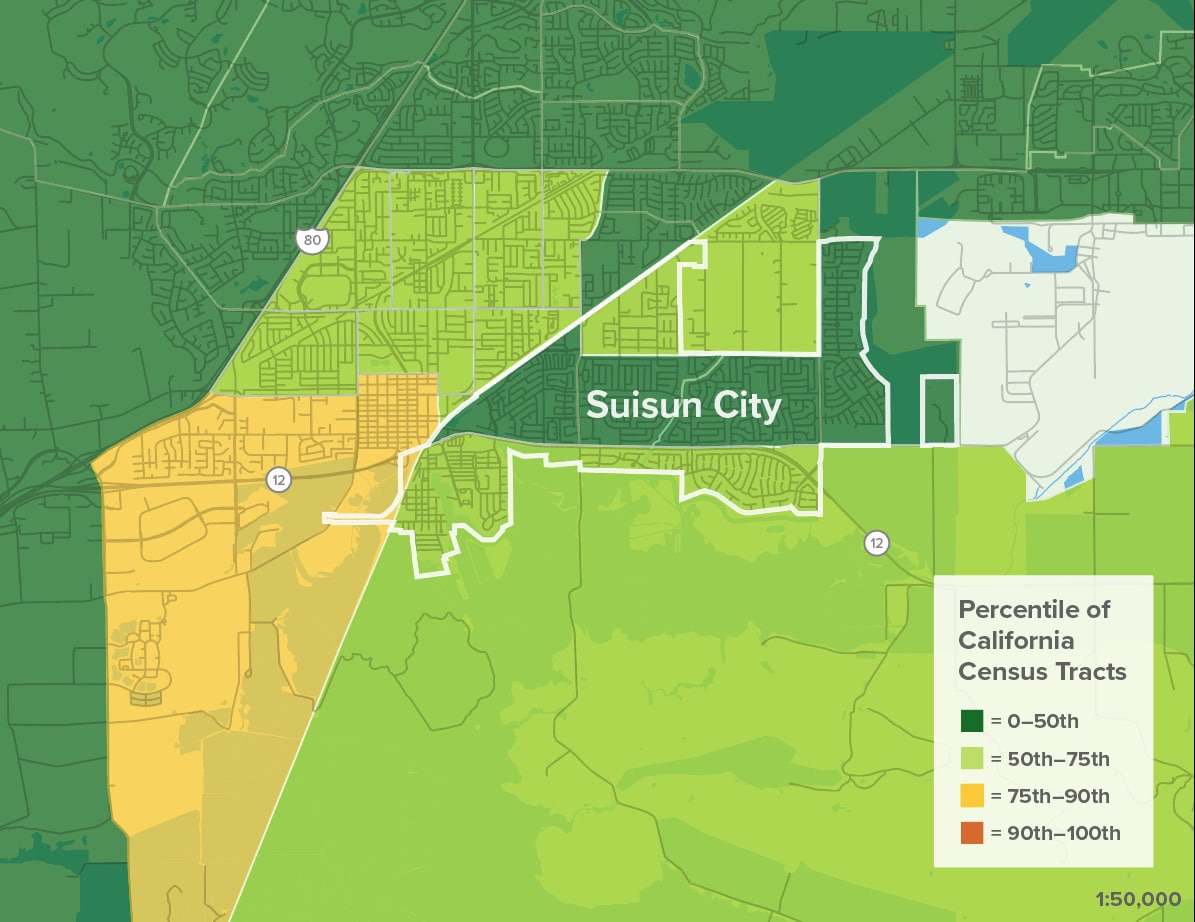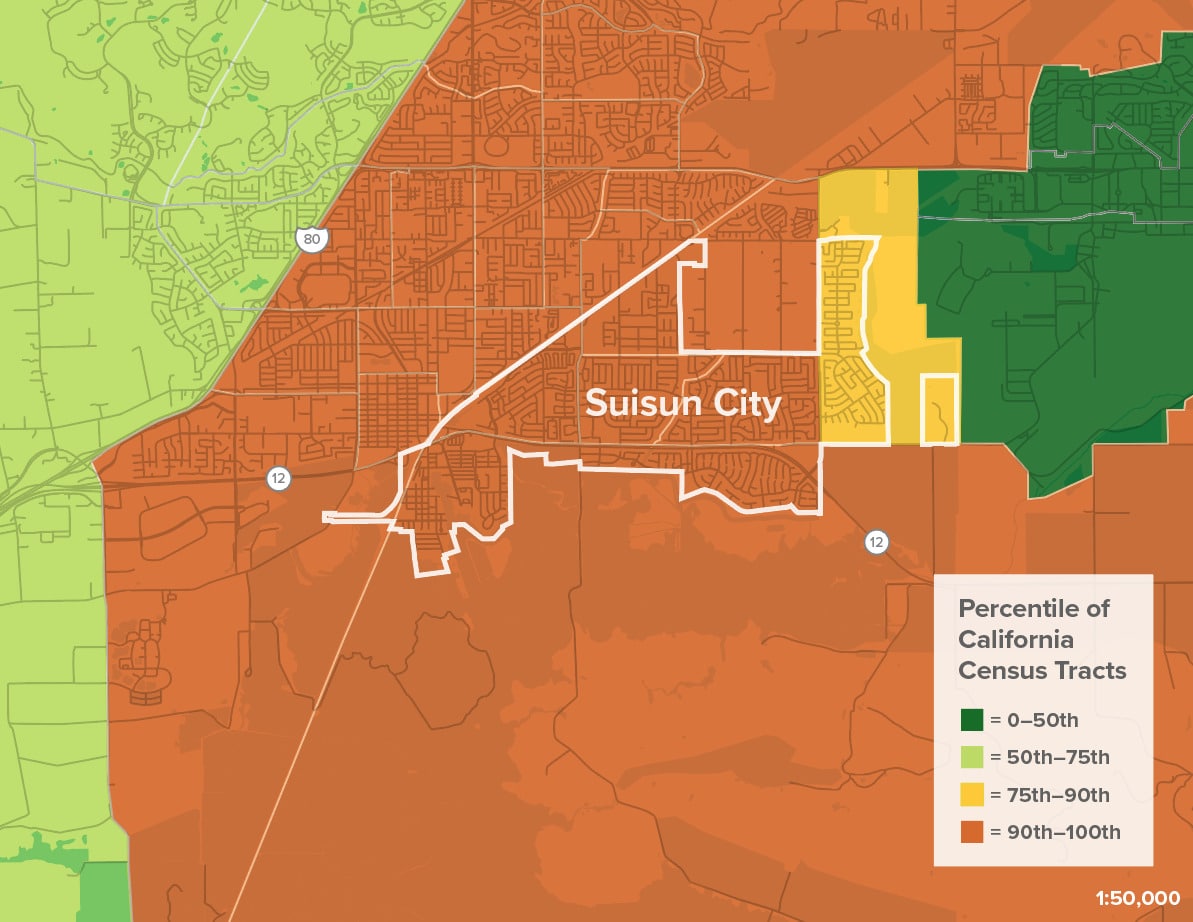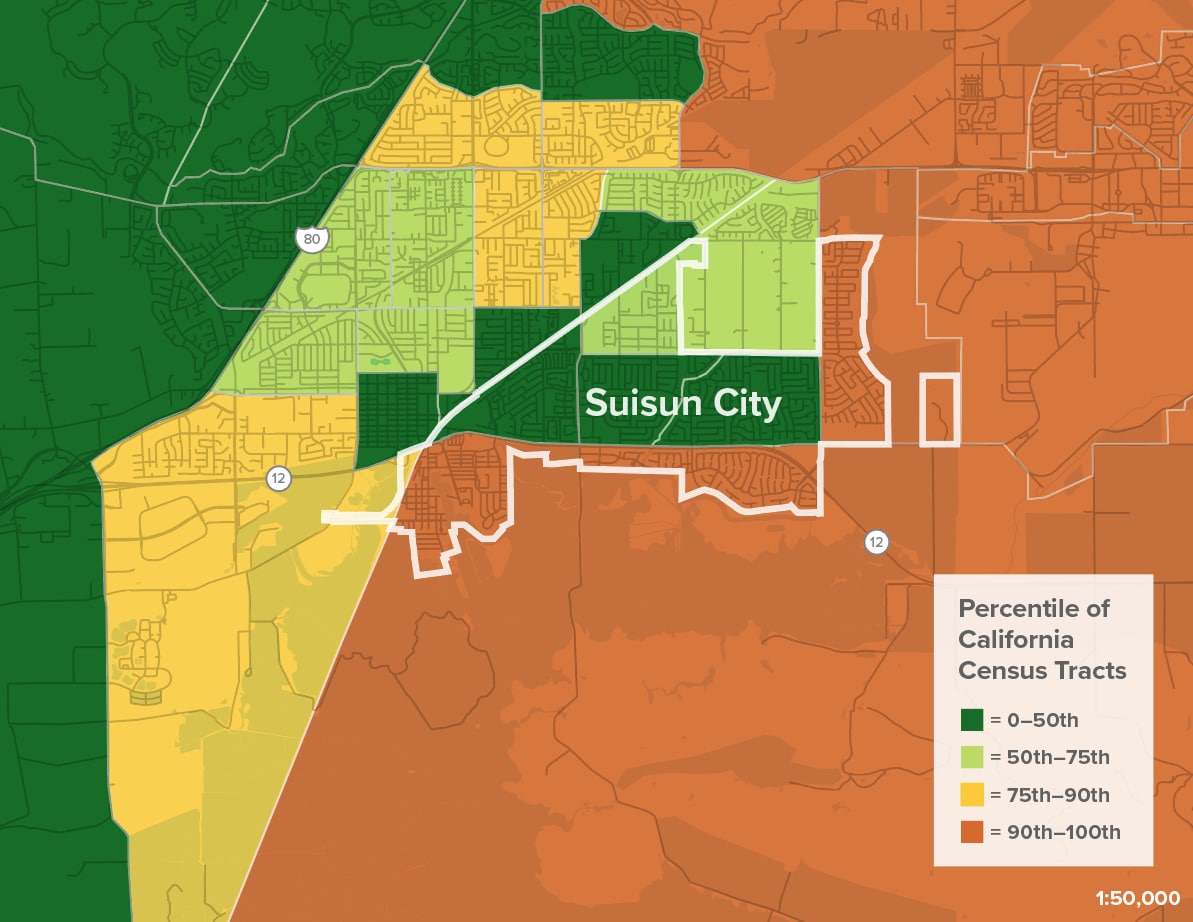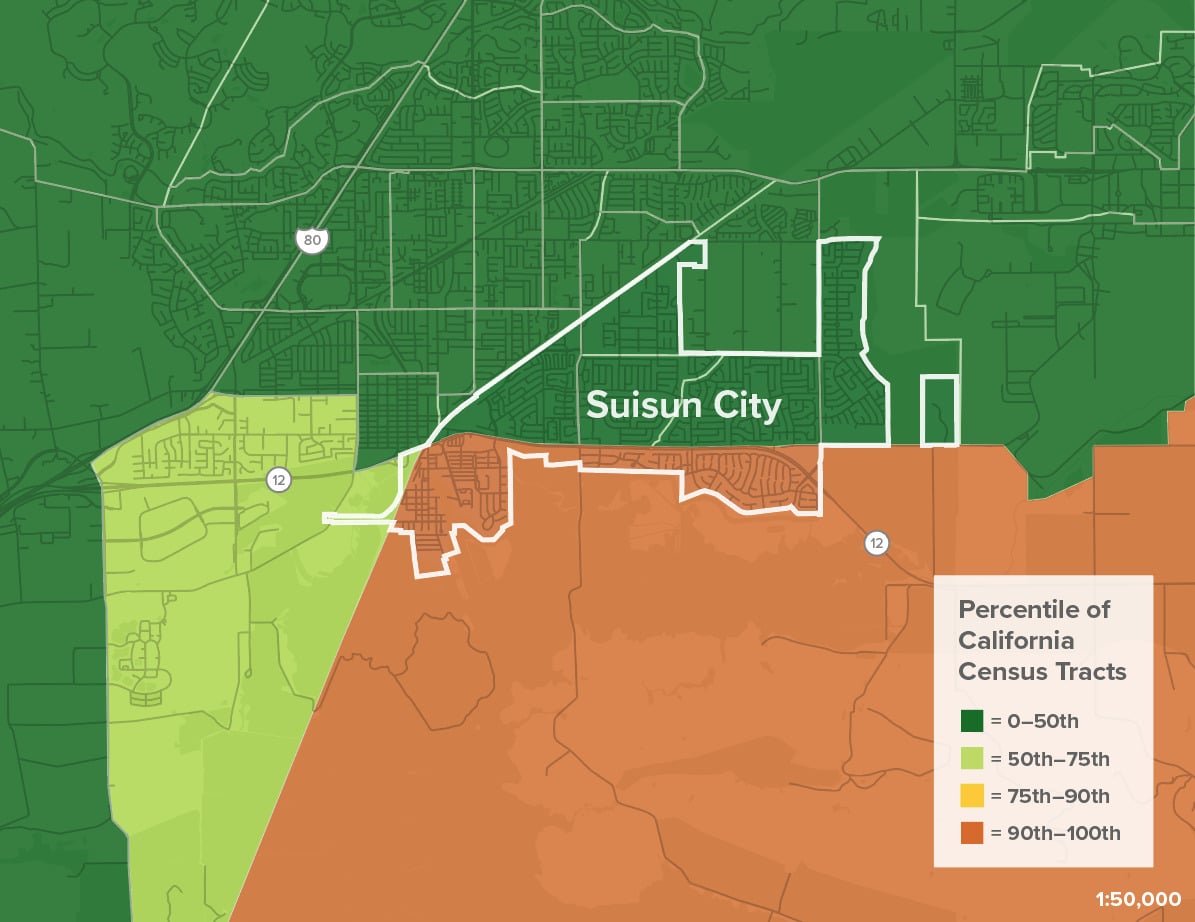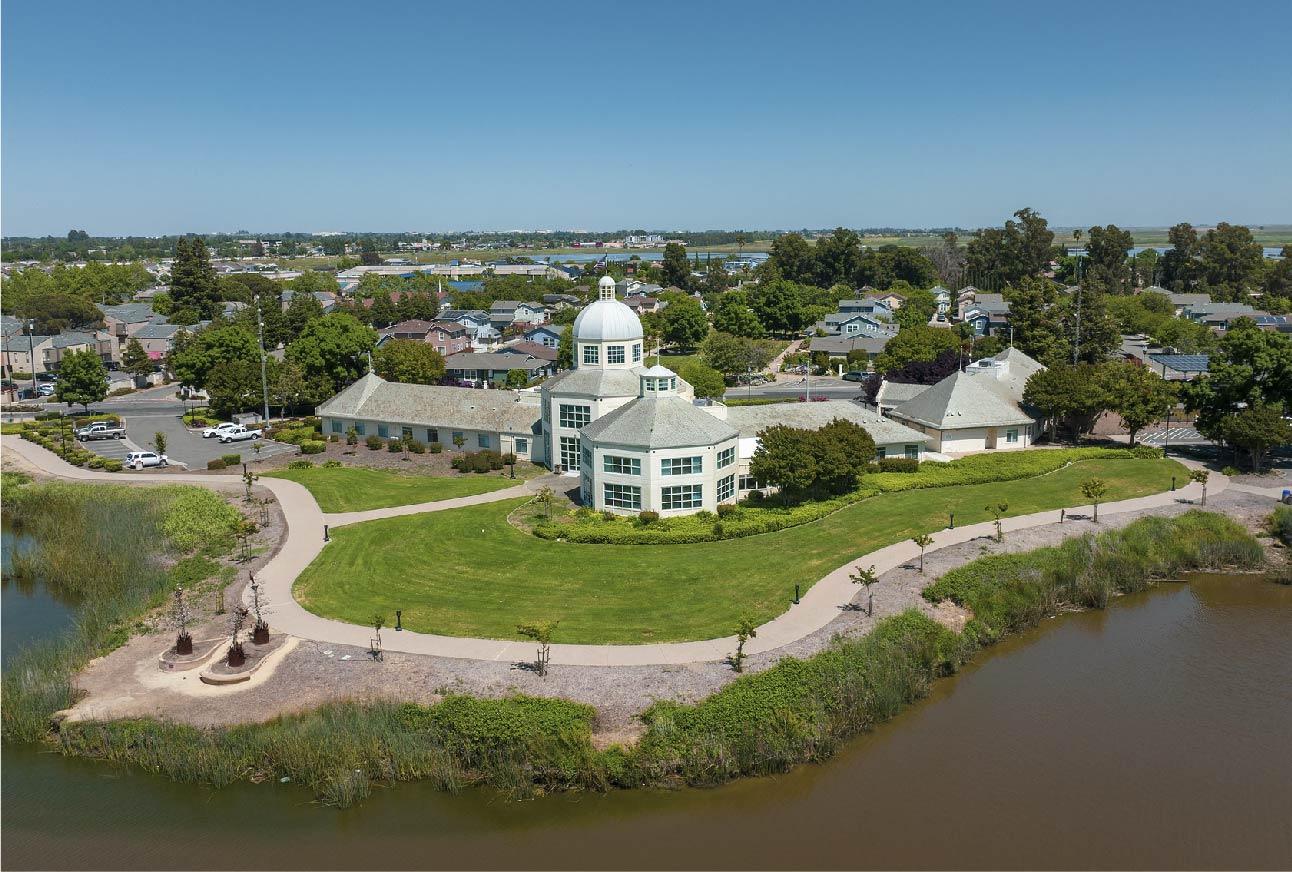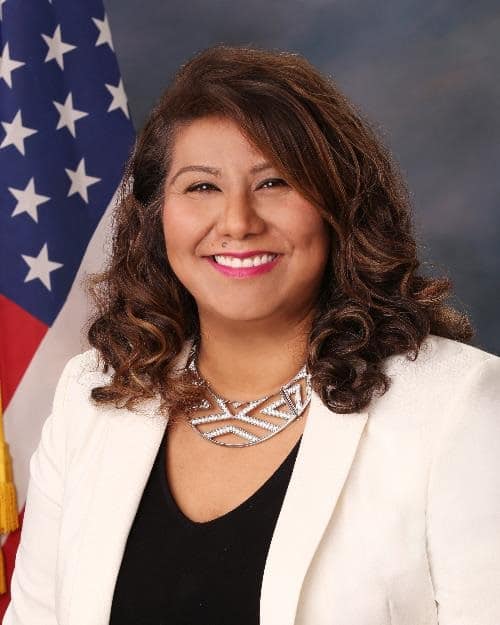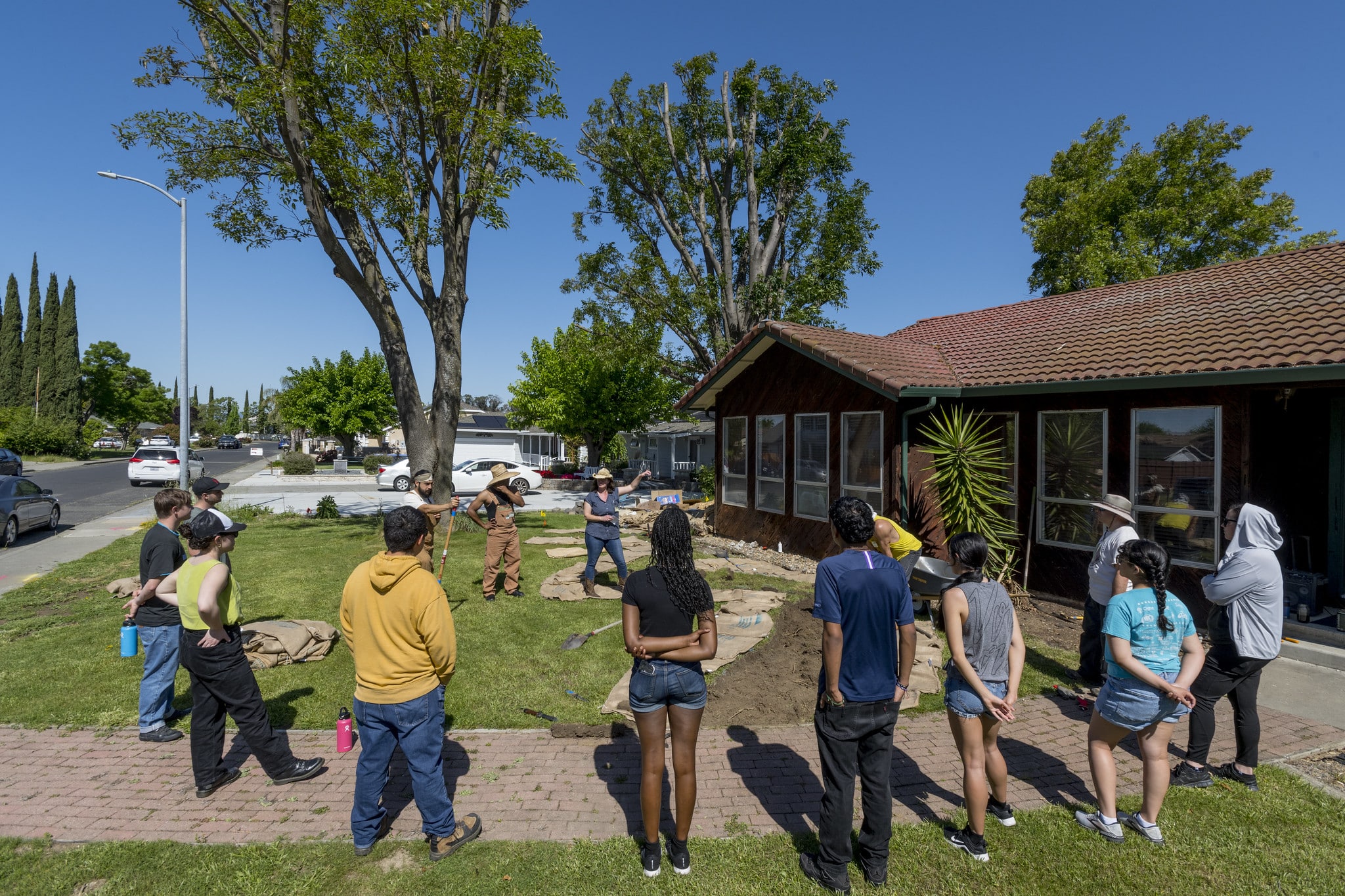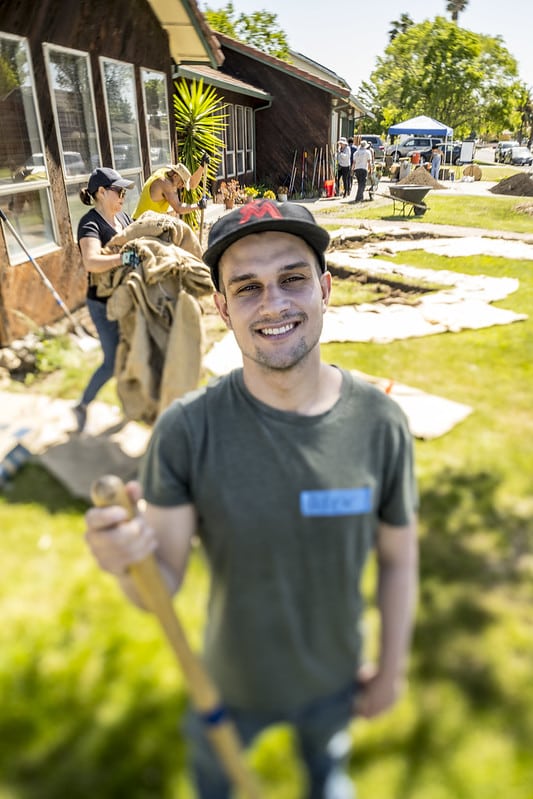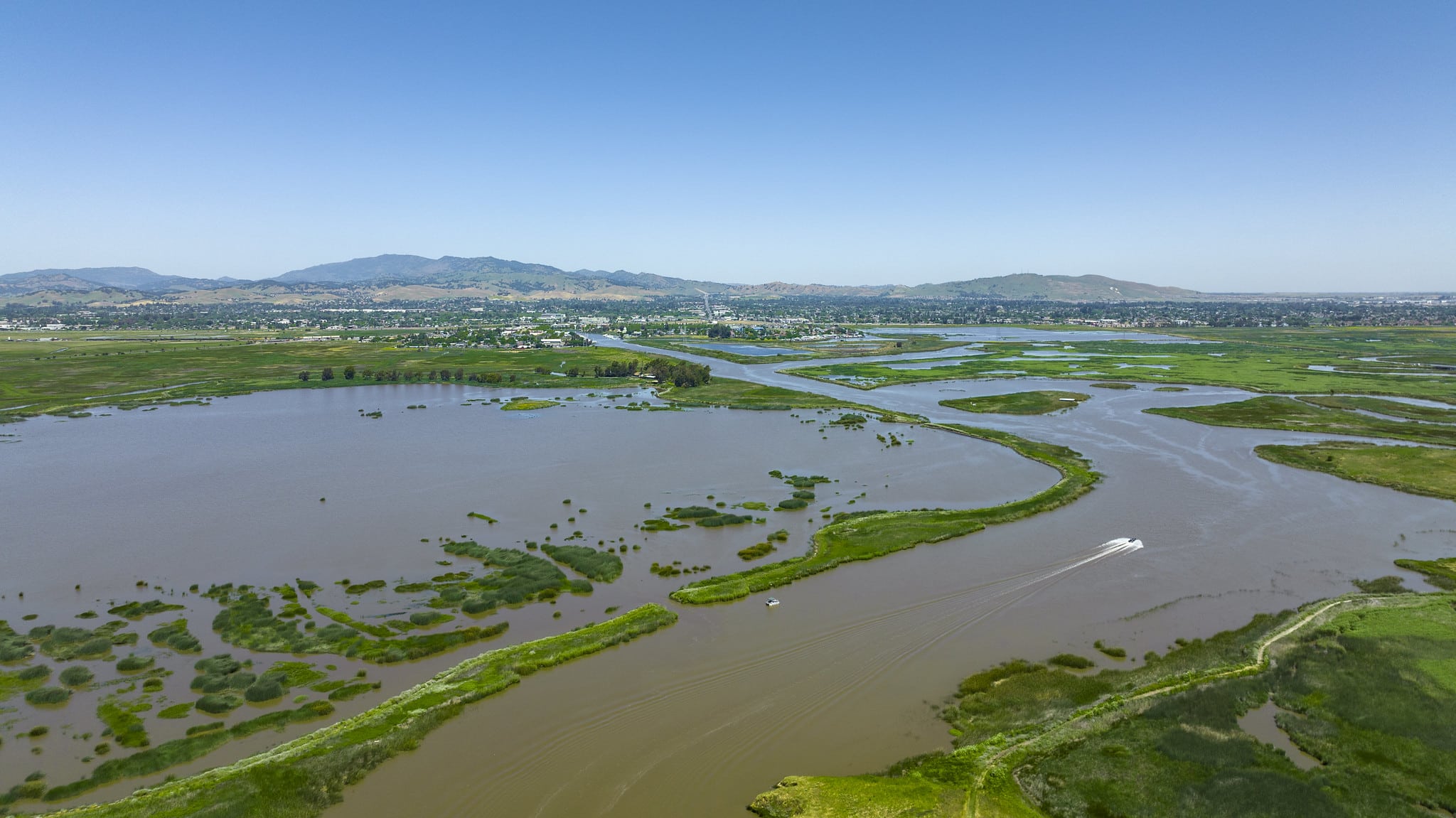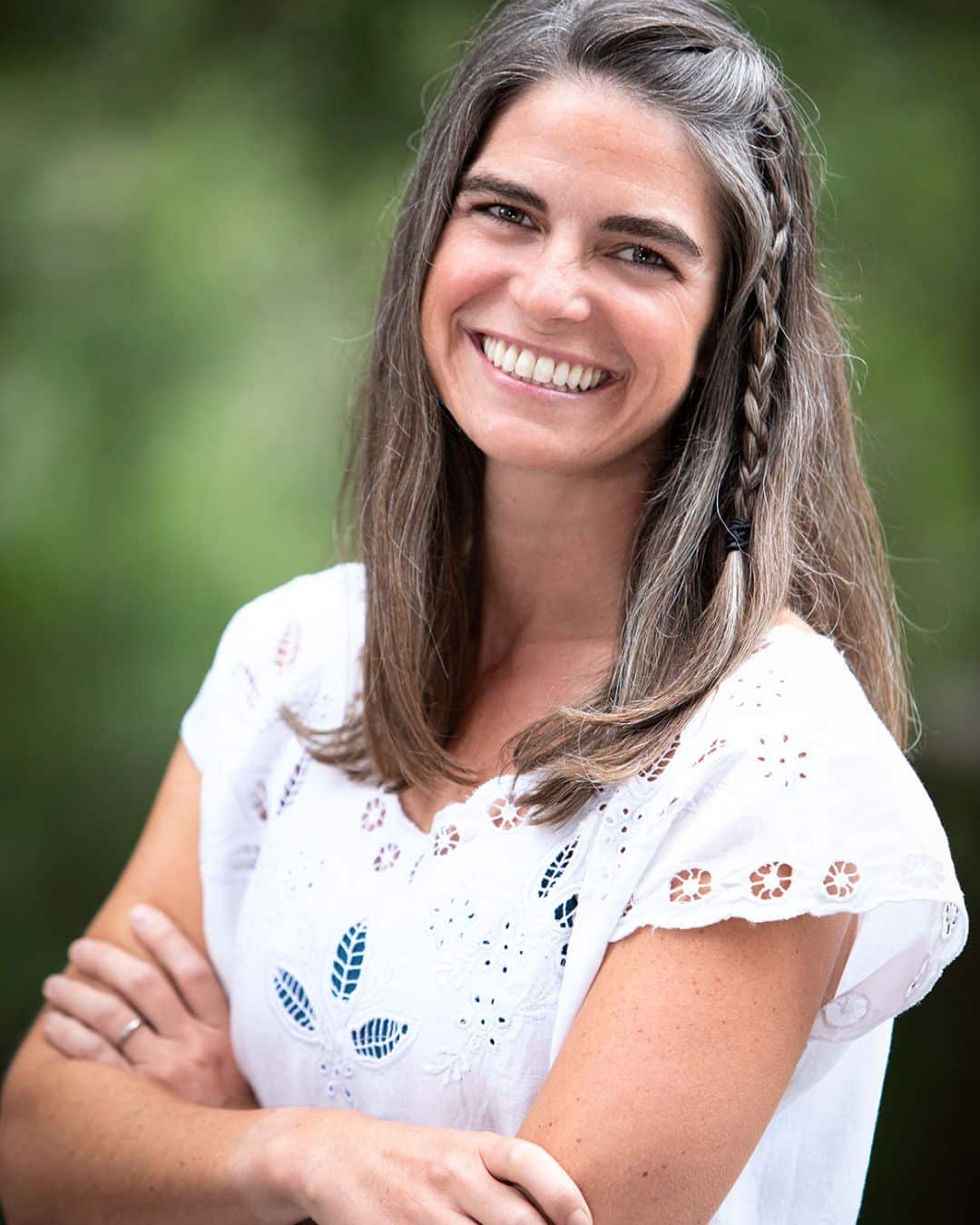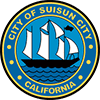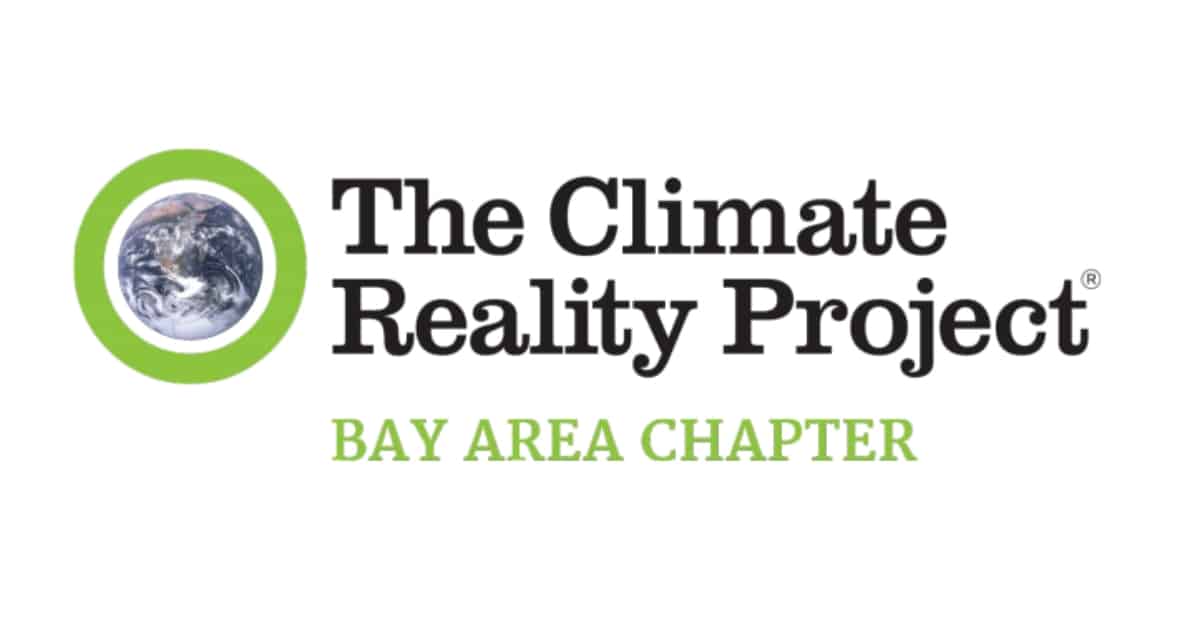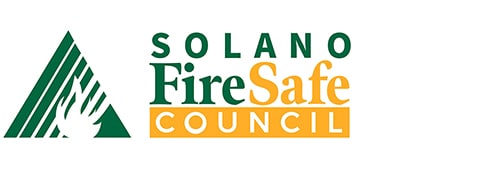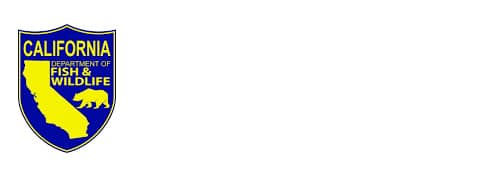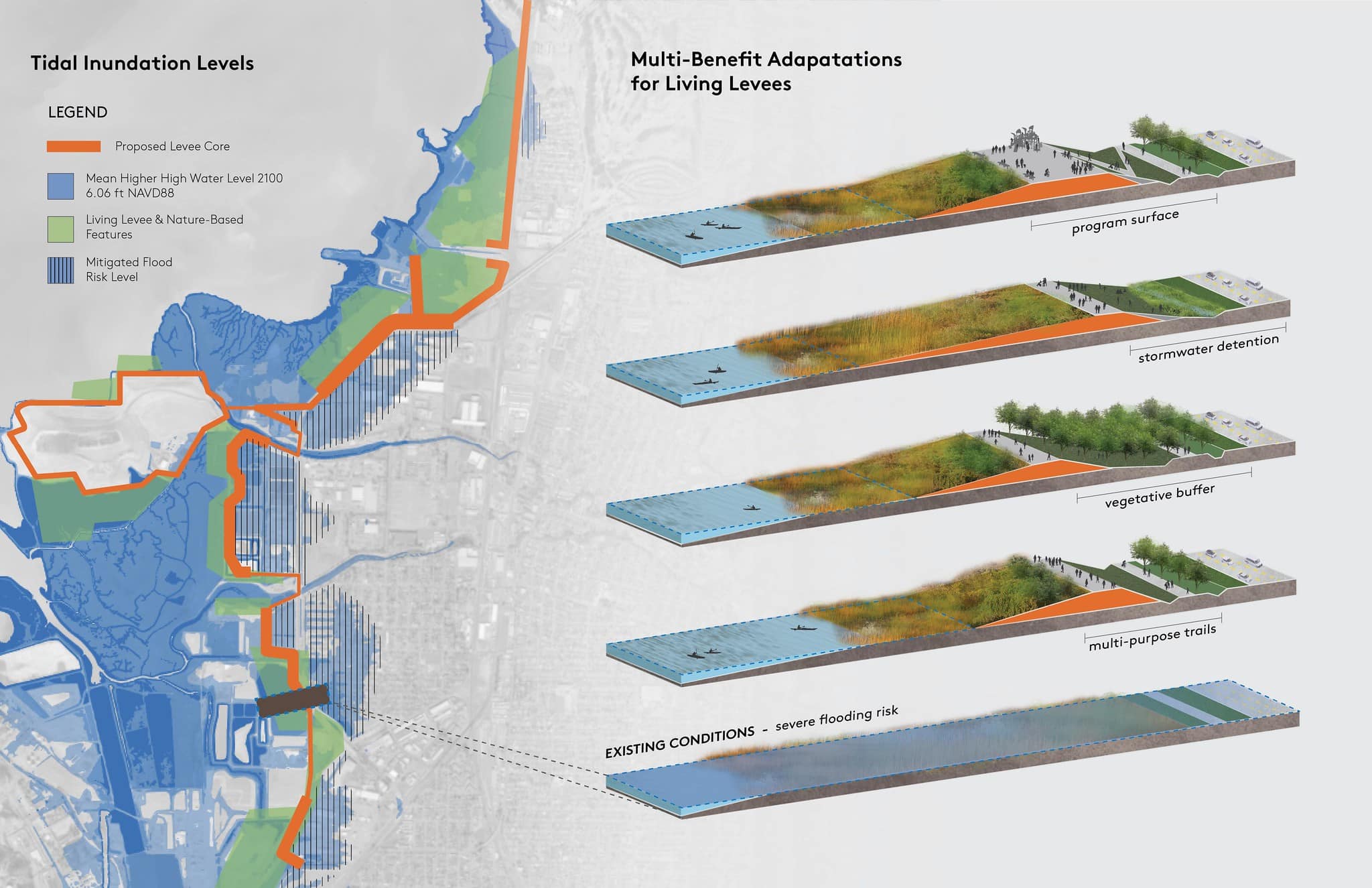Climate Vulnerabilities
Topics
Suisun City’s waterfront location has drawn people to this special place for centuries, but rising seas pose a near-term threat to the city itself, as well as to its neighboring wetland and marsh habitats.
While the areas south of Highway 12 will have to contend with sea level rise sooner than the rest of the city, the impacts to transportation, services, and housing will send shocks throughout the region—affecting low-income and housing-insecure people the most.
Flood impacts will substantially shape Suisun’s future over the long term, but recent wildfire events in the Marsh have elevated wildfire safety to be a key near-term priority for residents.
Inland Flooding & Sea Level Rise
Suisun is on the frontlines of sea level rise and has the opportunity to set a powerful example for places across the Bay Area and beyond of how to plan equitably for this, and other, climate impacts.
Projected Sea Level Rise in Suisun City
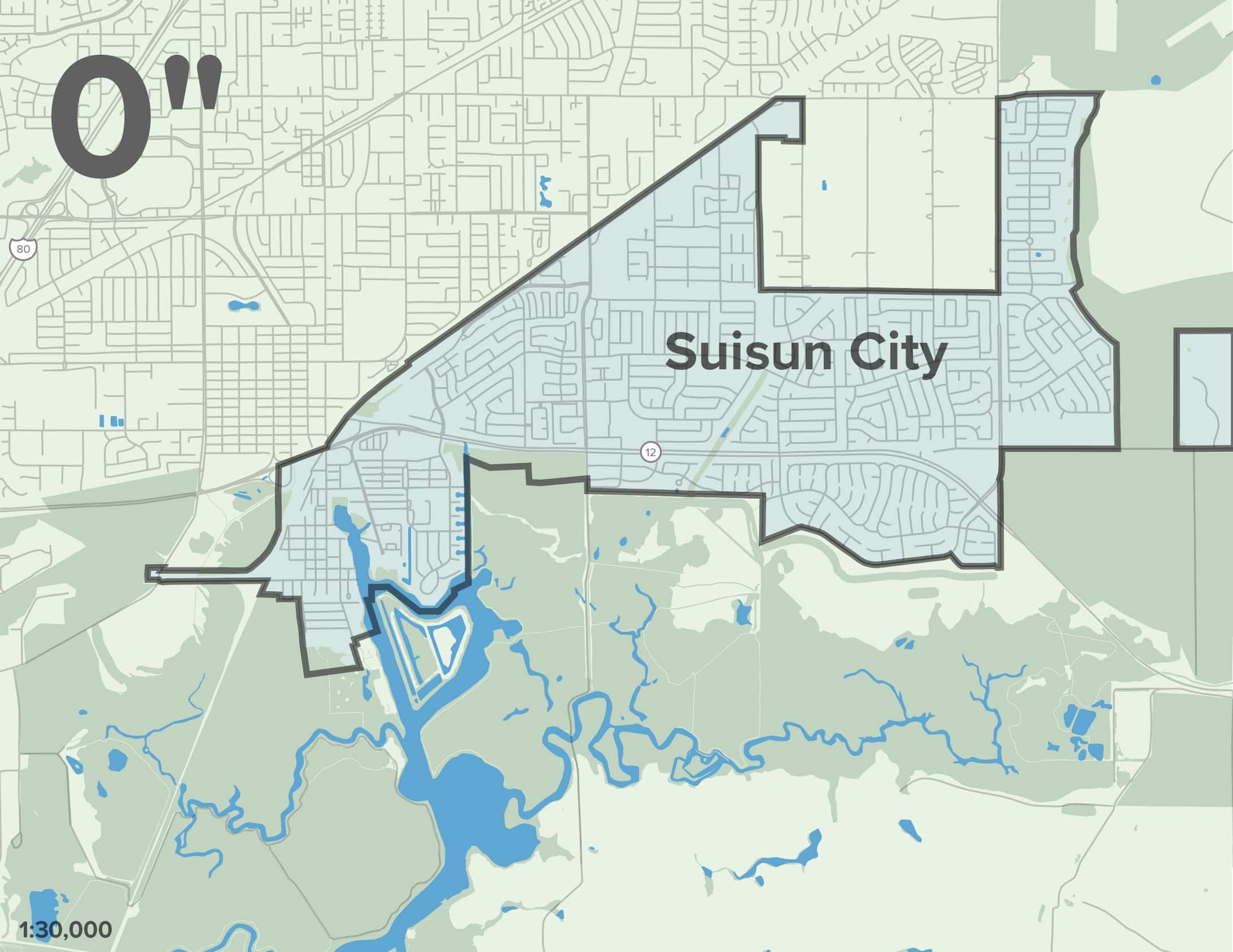
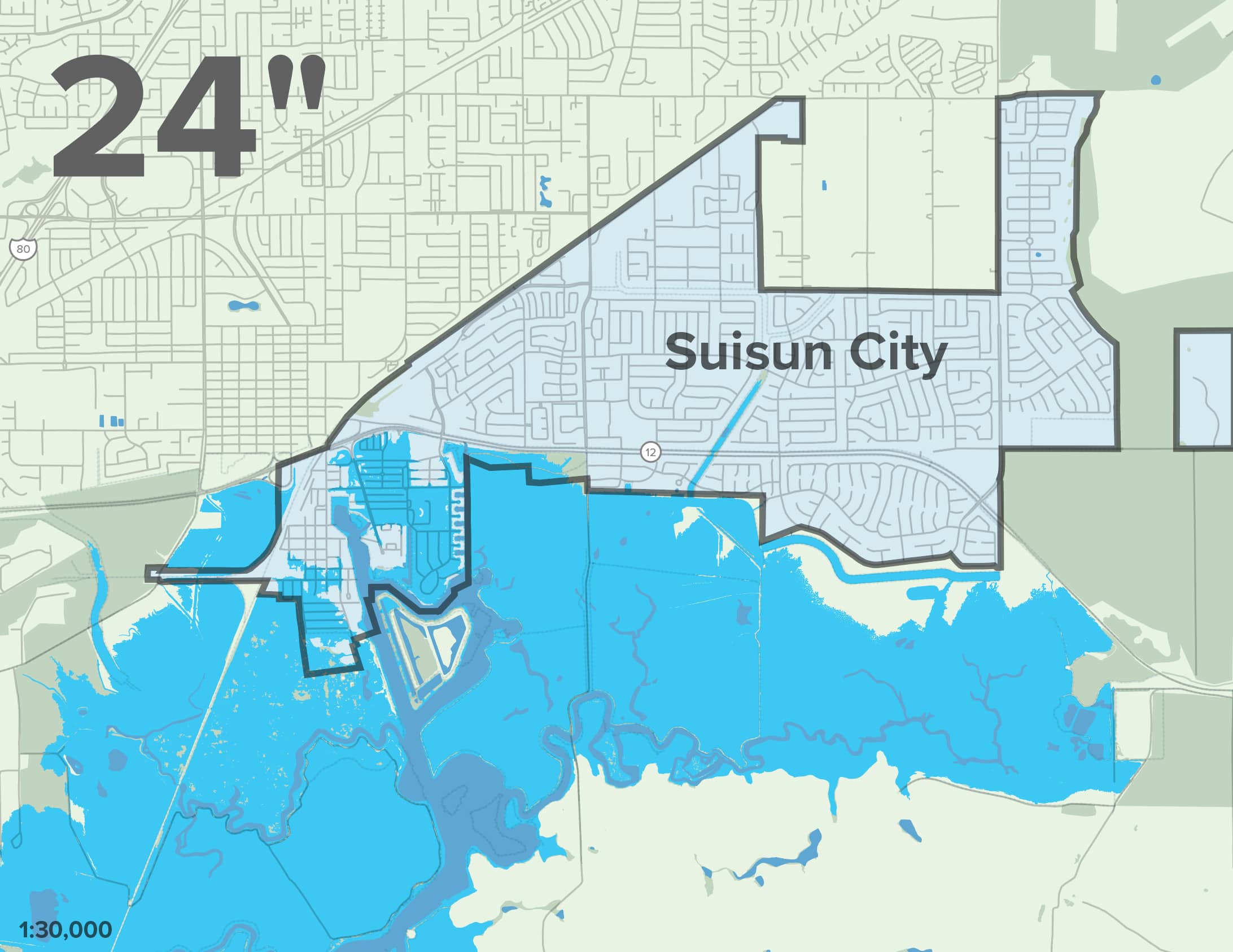
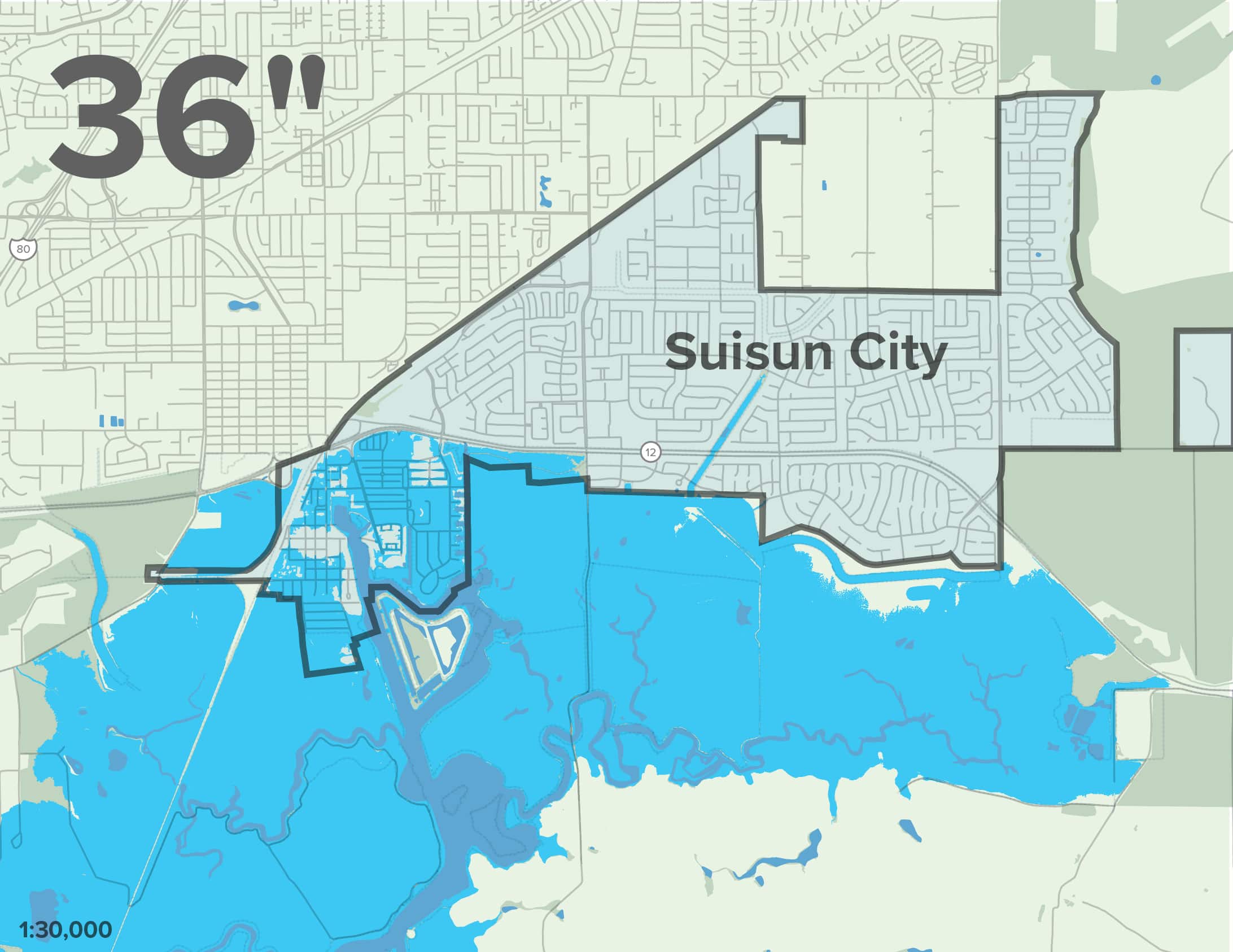
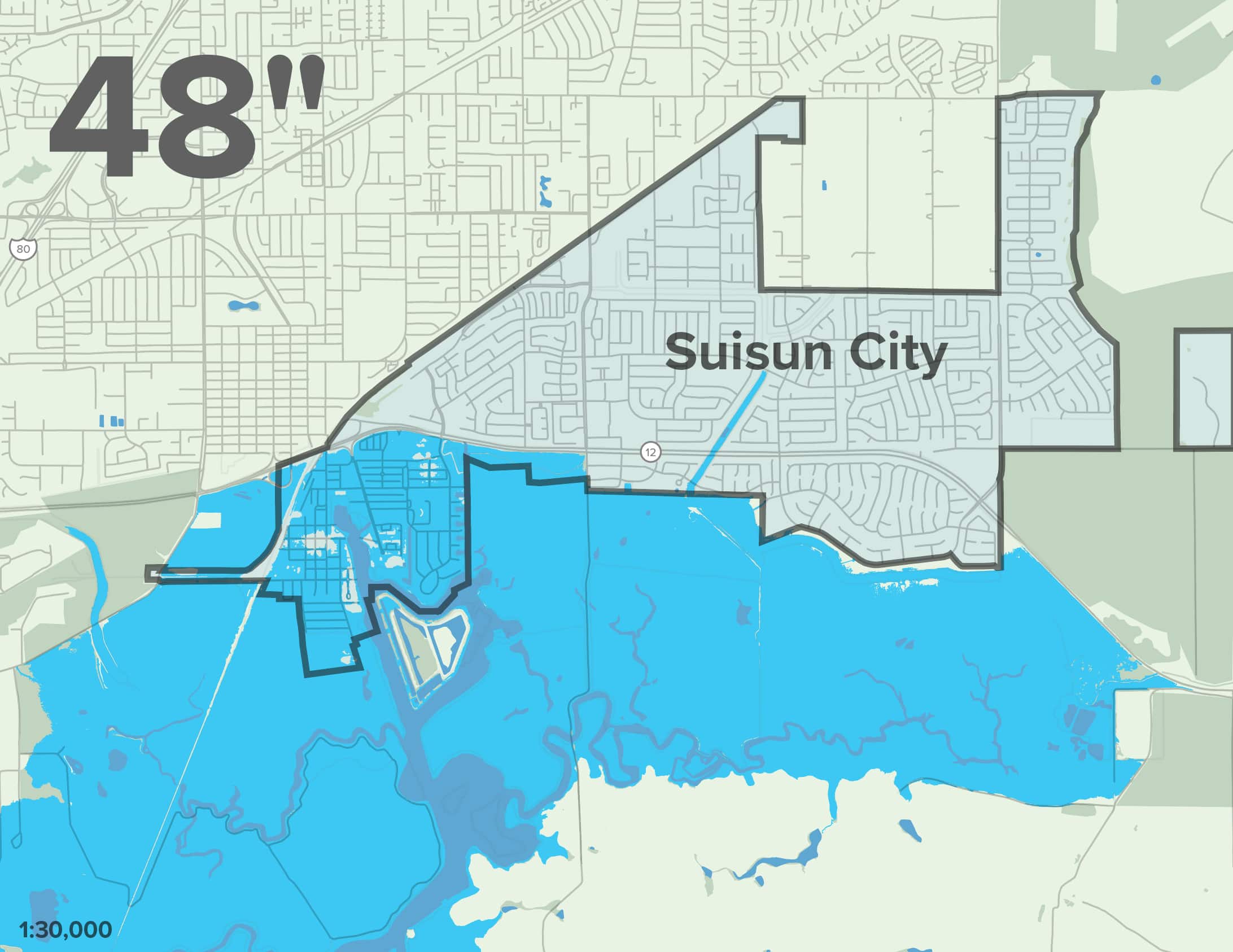
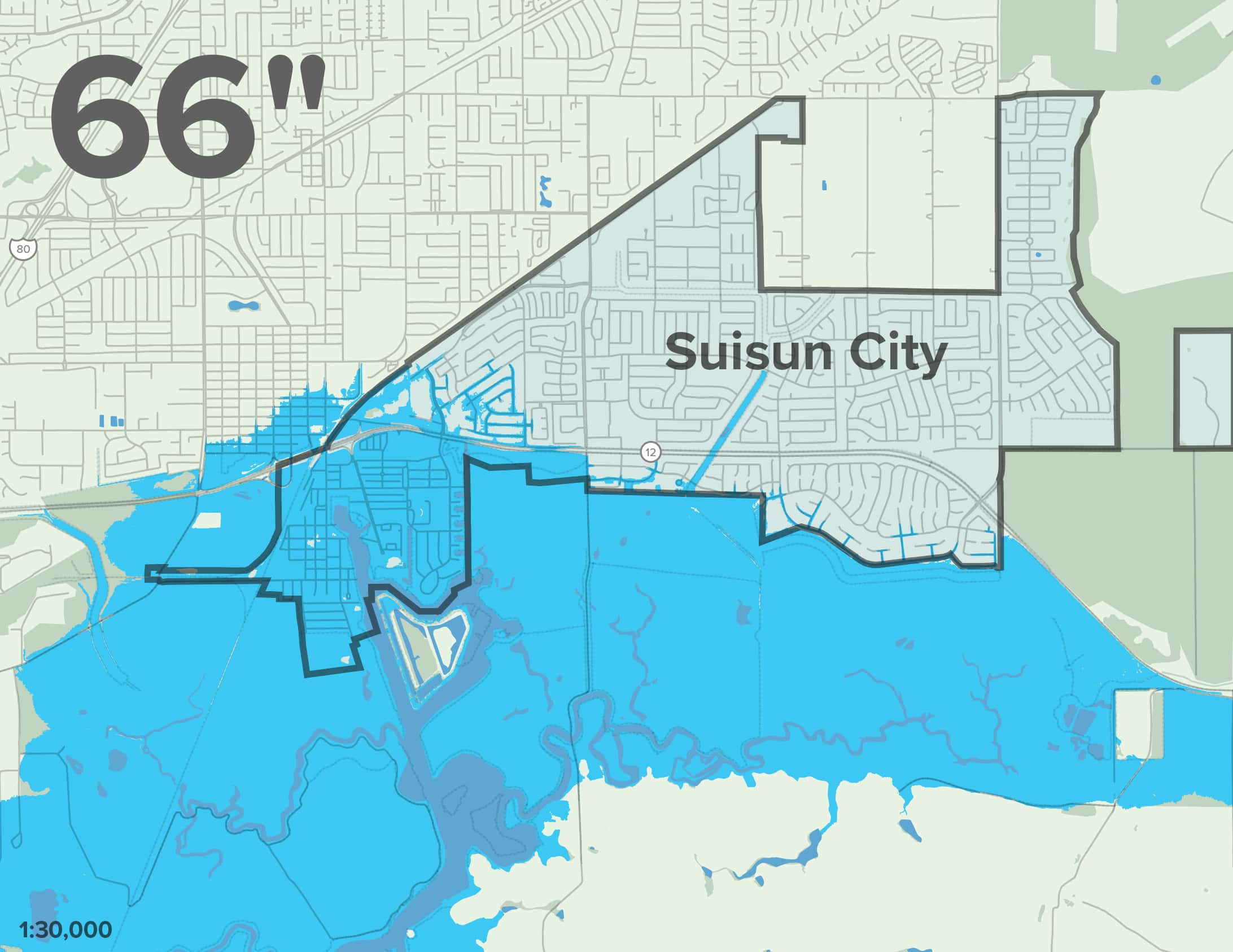
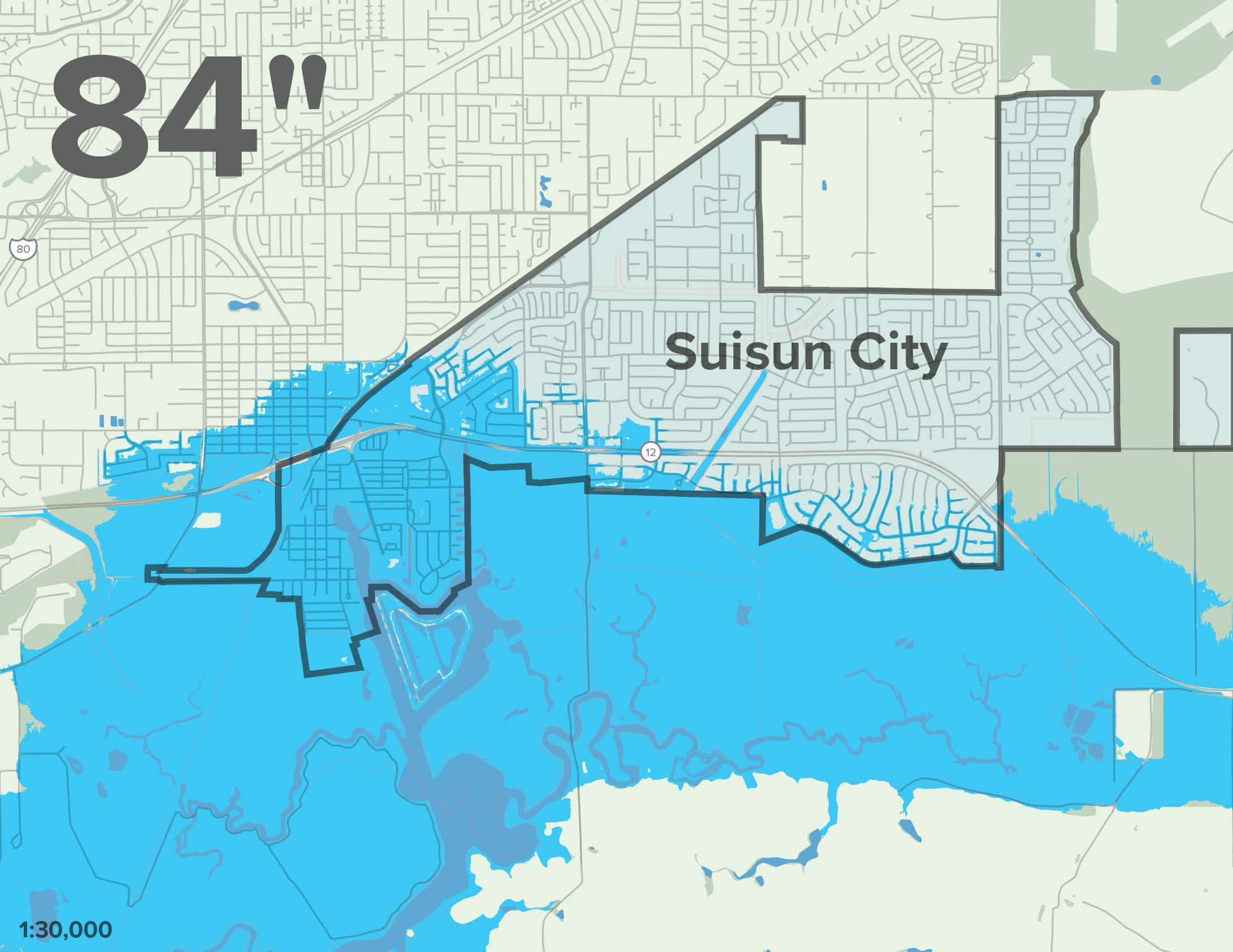
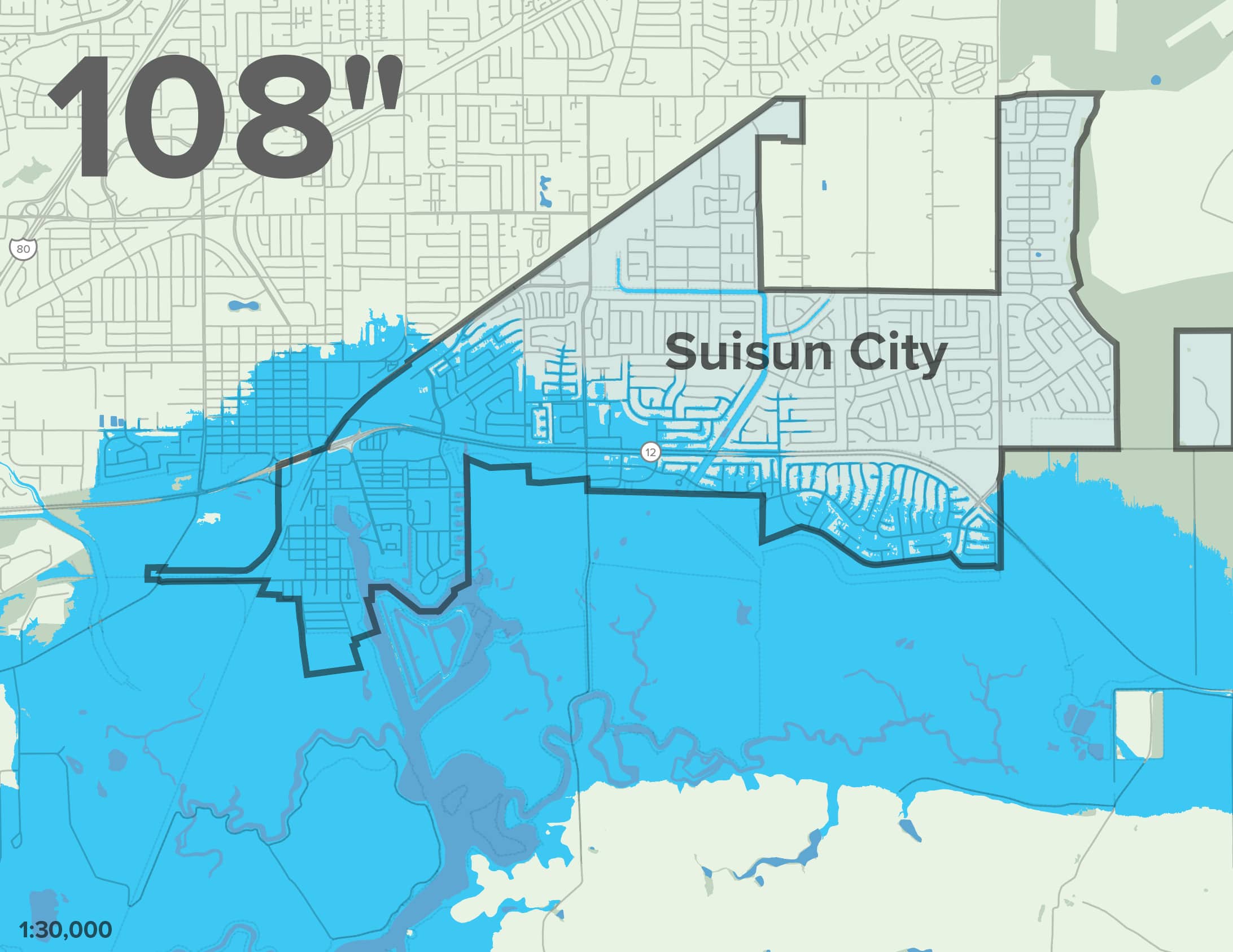
By 2050, most of the area south of Highway 12 will experience multiple feet of flood inundation, which will impact the downtown Waterfront District, City Hall, Crystal Middle School, Amtrak, homes, and industry.
With 108 inches of sea level rise expected by 2100, the majority of Suisun will be more than five feet underwater.
Rising seas will be a powerful force dictating the city’s future, but with early planning and action, Suisun can be a model for small cities adapting to higher water levels. Suisun can lead the way in actualizing a vision for healthy, thriving cities that are living with higher water levels.
The Suisun Marsh provides unique opportunities such as “Green Infrastructure” and “Gray Infrastructure” for sea level rise adaptation that simultaneously maintains the region’s ecology and provides recreational opportunities.
Map Citations:
Adapting to Rising Tides: Bay Conservation and Development Commission (BCDC). 2020. “ART Bay Area Sea Level Rise and Shoreline Analysis Maps.” Accessed June 2, 2023. https://explorer.adaptingtorisingtides.org/download.
Vulnerable Populations
In Suisun, there are 3,376 households that qualify as low income (36.5%), 11.6% of people report not speaking English “very well,” and 48.45% of renters are cost burdened—all of which can make adapting to and recovering from climate shocks extremely difficult and inequitable.
Social Vulnerability and Sea Level Rise
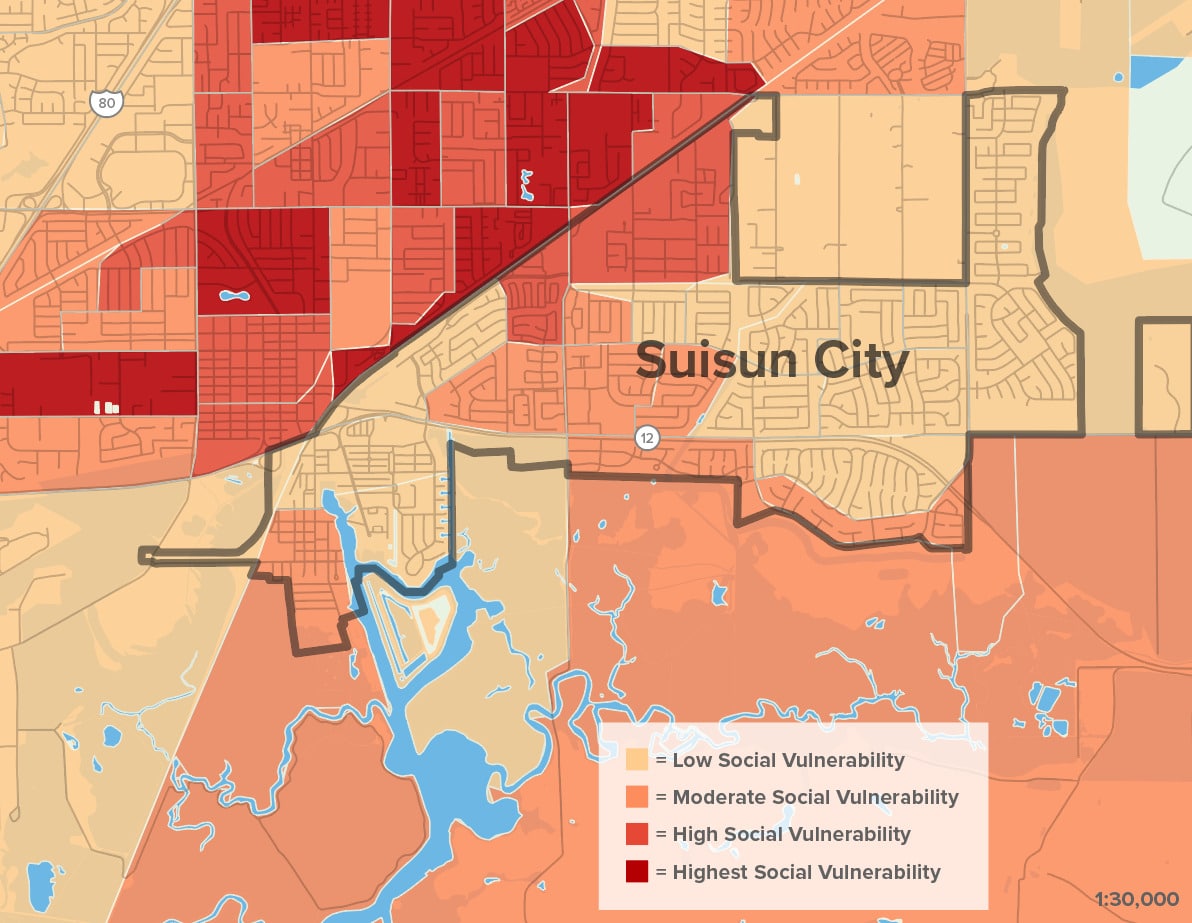
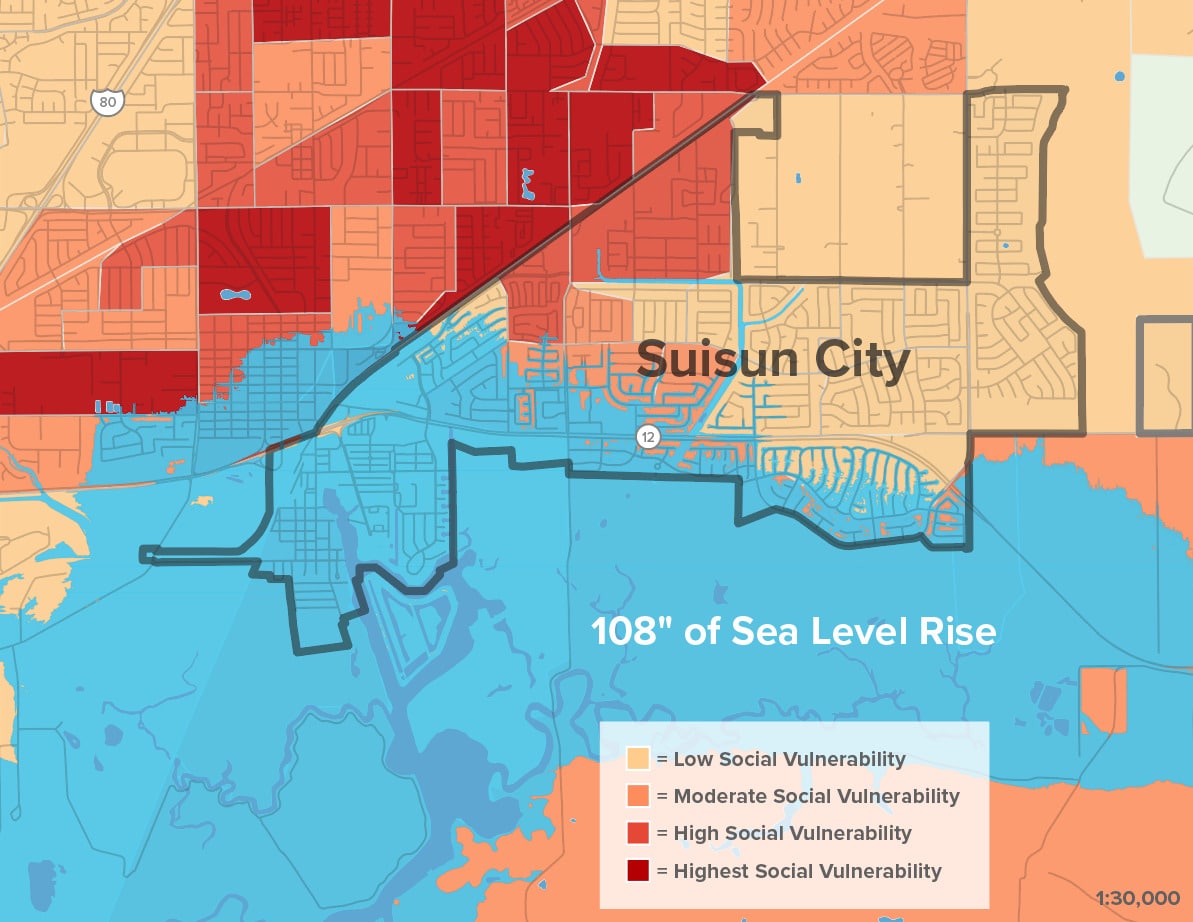
Suisun City’s resilience actions will not only impact its residents but will also have huge impacts on neighboring Fairfield residents. Both communities will in turn experience housing price shocks, disruptions to transit services, and lack of access to schools and essential services
Map citations:
Bay Conservation and Development Commission (BCDC). 2020. “Community Vulnerability.” Accessed June 20, 2023.
Adapting to Rising Tides: Bay Conservation and Development Commission (BCDC). 2020. “ART Bay Area Sea Level Rise and Shoreline Analysis Maps.” Accessed June 2, 2023.
Wildfire
In addition to threats of sea level rise, wildfire risk is a growing concern for local residents who have experienced two recent brush fires in shoreline areas—the Nurse fire in 2019 that burned over 1,500 acres and the Wildlife fire in 2020 that burned 300 acres and impacted multiple neighboring homes.
Fire Risk in Suisun City
The recent fire events in Suisun are a powerful lesson in the importance of vegetation maintenance. Several of Suisun’s shoreline areas that are predominantly marshlands have been identified as fire hazard zones.
The 2020 Wildlife fire traumatized nearby residents when a brushfire erupted in an unmaintained area buffering a Suisun neighborhood from the Marsh. In the aftermath, surveyed residents ranked wildfire danger above all other climate threats as a top priority. The Fairfield Suisun Sewer District is currently leading a project to mitigate both flooding and wildfire risks at the site of the fire—learn more here.
Map citation:
Greenbelt Alliance. 2022. “Hotspots Fire Map.”


